by Louise Irvine
Monster Soup was a startling satire on London’s drinking water in 1828. A horrified woman drops her teacup as she looks at a drop of Thames water through a microscope. The cartoon directed at the London water companies was drawn by William Heath when commissioners were appointed to report on the dreadful condition of water supplies from the River Thames. After the report, the situation improved with new reservoirs on the north side of the river. However, the south continued to receive infected water until the 1860s when the present sewer system was installed using drainpipes supplied mainly by the Doulton Lambeth pottery. The story of Henry Doulton’s successful drainpipes business has been told in an earlier article. However, he applied his ingenious imagination to many other aspects of sanitary science which was then in its infancy.
Water Filters
As the public became aware of the polluted condition of London’s drinking water, demand grew for purifying filters. The Doulton pottery made filter cases in salt-glazed stoneware and granular charcoal was used initially as the filtration medium. Henry Doulton’s first task on joining the Lambeth Pottery in 1835, at the age of 15, was to throw vessels on the potter’s kick wheel. His father promised to buy him a horse when he was man enough to throw a three-gallon filter case. Henry applied his powers of invention to developing a steam-driven potter’s wheel, which became a huge advantage at the Lambeth pottery. In a short time, Henry demonstrated his prowess by throwing fifteen filters, with a capacity of three gallons, before breakfast. On his 21st birthday, Henry celebrated his coming of age by throwing an enormous 300 gallon Ali Baba type transport jar for chemicals. His father proudly exhibited it outside the pottery with a notice, “The largest stoneware vessel in the world.” A visitor once described it as being big enough to hold five or six of the forty thieves.
Free, fresh drinking water became one of the most pressing social issues of the 19th century when it was realized that outbreaks of cholera in 1848-9 and 1853-4 were caused by polluted water supplies from wells. The Metropolitan Free Drinking Fountain Association was founded in 1859 to provide clean uncontaminated supplies. The Doulton Pottery made a wide variety of salt-glazed stoneware drinking fountains, which were often presented to communities by local philanthropists.
By Royal Appointment
After consultation with eminent men of science, Henry Doulton improved the efficiency of the Doulton water filters with superimposed blocks of carbon screwed to the bottom of the stoneware case. Watertight stoneware screws were one of Henry’s early inventions to improve the efficiency of Doulton’s bottles, jars and filters. Doulton filters were supplied to Queen Victoria's household and the case was embellished with the Royal Arms in relief. Decorating stoneware water filter cases was the first assignment for the artist George Tinworth, when he began his Doulton career in the 1860s. Styles for domestic dining rooms became increasingly elaborate and ranged from Neo-Gothic to Chinese. In the 1880s Doulton's most popular model featured a manganous carbon filter and by the early 1900s, the discoveries of Professor Louis Pasteur had led to the development of a new porous porcelain filter candle, which prevents the direct passage of all micro‑organisms.
Sanitary Science
One of Henry Doulton’s early accomplishments was the development of salt-glaze stoneware sinks which were much more hygienic than the old stone varieties. The challenge, which he overcame by 1859, was to fire large slabs of clay perfectly flat. The 1851 Great Exhibition and the 1862 London Exhibition showcased Doulton’s early stoneware contributions to scientific progress with displays of chemical apparatus and early sanitary wares. By the 1870s the Doulton catalogs were filled with sinks, closets, lavatories, baths, and other sanitary fixtures and fittings.
In 1877, Henry Doulton acquired shares in the Pinder Bourne factory in Burslem, Stoke-on-Trent because of their established interests in sanitary production. Doulton toilet sets and chamber pots in stylish patterns were made in huge numbers at the Burslem factory before plumbed in bathrooms became the norm. One of their most ingenious labor-saving devices was the Royle’s Patent Aquarius which was launched at the Chicago exhibition of 1893.
At the International Health Exhibition in 1884, the Doulton company won no less than 21 gold, silver, and bronze medals. The range of Doulton sanitary wares was impressive and included domestic fittings suitable for cottages and palaces as well as institutional designs for prisons, hospitals, and ships. The Titanic was one of their most infamous marine commissions and Doulton sinks and toilets have been salvaged from the seabed.
Crowning Achievements
In 1885 Henry Doulton received what he regarded, apart from his knighthood two years later, as the crowning honor of his whole career – the award of the Albert medal of the Society of Arts (now the Royal Society of Arts.) Previous distinguished recipients included great men of science such as Louis Pasteur and Henry Doulton was the only potter to have been so honored. A few years after Sir Henry’s death in 1901, the Doulton company’s contribution to sanitary science was acknowledged with the award of a Royal Warrant by King Edward VII and permission was given to call the company "Royal Doulton"
Brightening the Long Days
Hospitals and laboratories were important customers for Doulton’s health innovations in the early 20th century, as well as for their art. A growing concern for child health and welfare culminated in the opening of several specialist hospital wards for sick children at the end of Queen Victoria’s reign. The new children’s wards were tiled for hygienic reasons, but pictorial panels were introduced to enliven the enforced stay of the young invalids. The building, decorating, and equipping of bed spaces was often sponsored by philanthropists and a well-endowed ward might have 20 murals situated above the cots. Several artists at Doulton’s Lambeth studio were involved in the design of these tile panels, including William Rowe, Margaret Thompson and John McLennan whose smaller scale works can be seen on display at WMODA.
It was said of Sir Henry Doulton when he died in 1897 that he made a fortune out of drainpipes and spent it on art. Certainly, his sizeable fortune helped sustain the early years of the Art Studios at Lambeth and Burslem. The spectacular art wares at WMODA would not have existed without Sir Henry’s legacy in science and art.
Read more...
Down the Drain in London – The Great Stink to the Great Smog
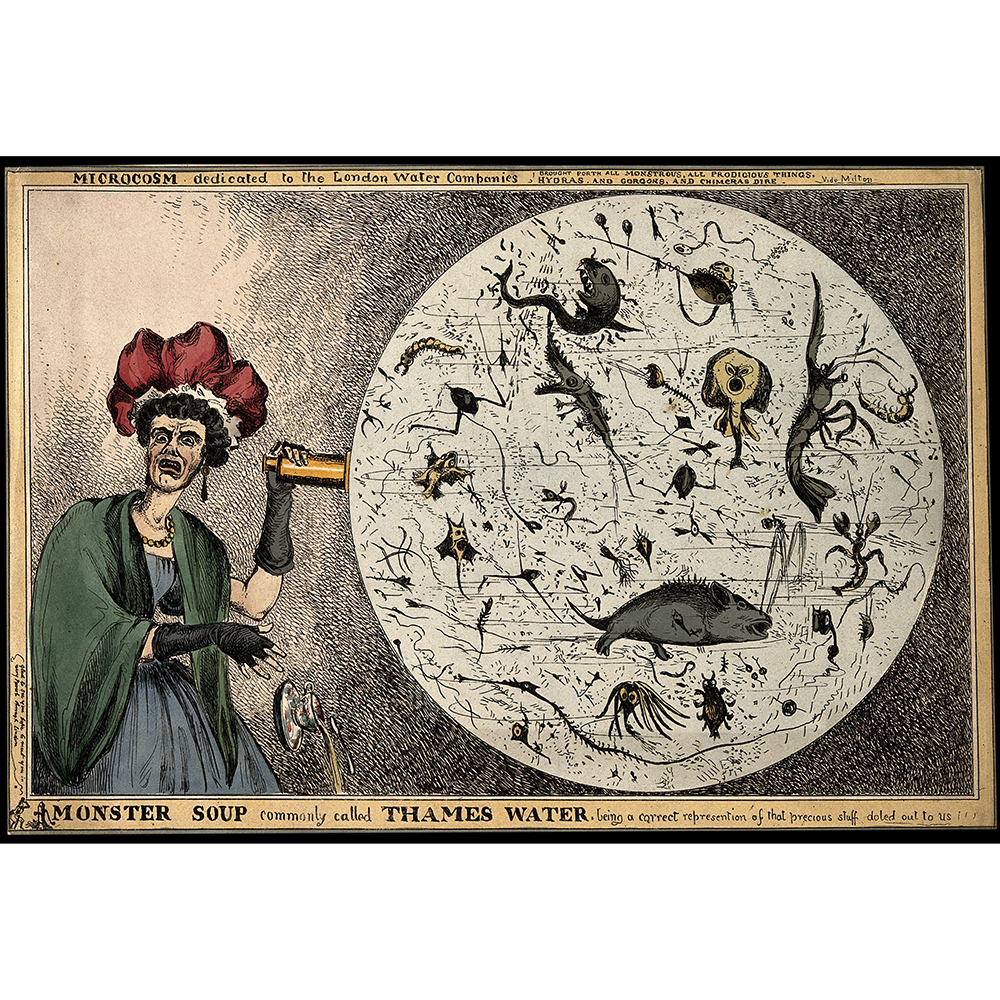
Monster Soup Thames Drinking Water 1828

A Drop of Thames Water Punch 1850
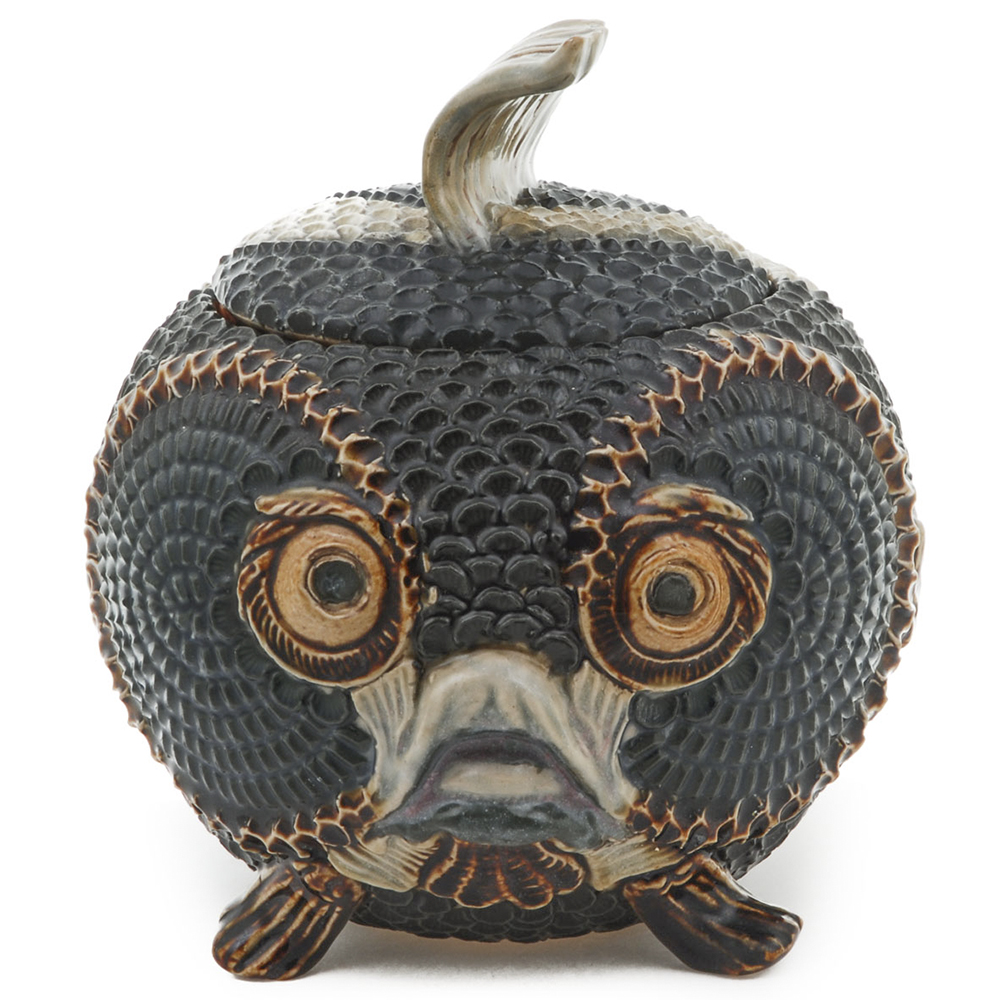
Grotesque Fish by M.V. Marshall
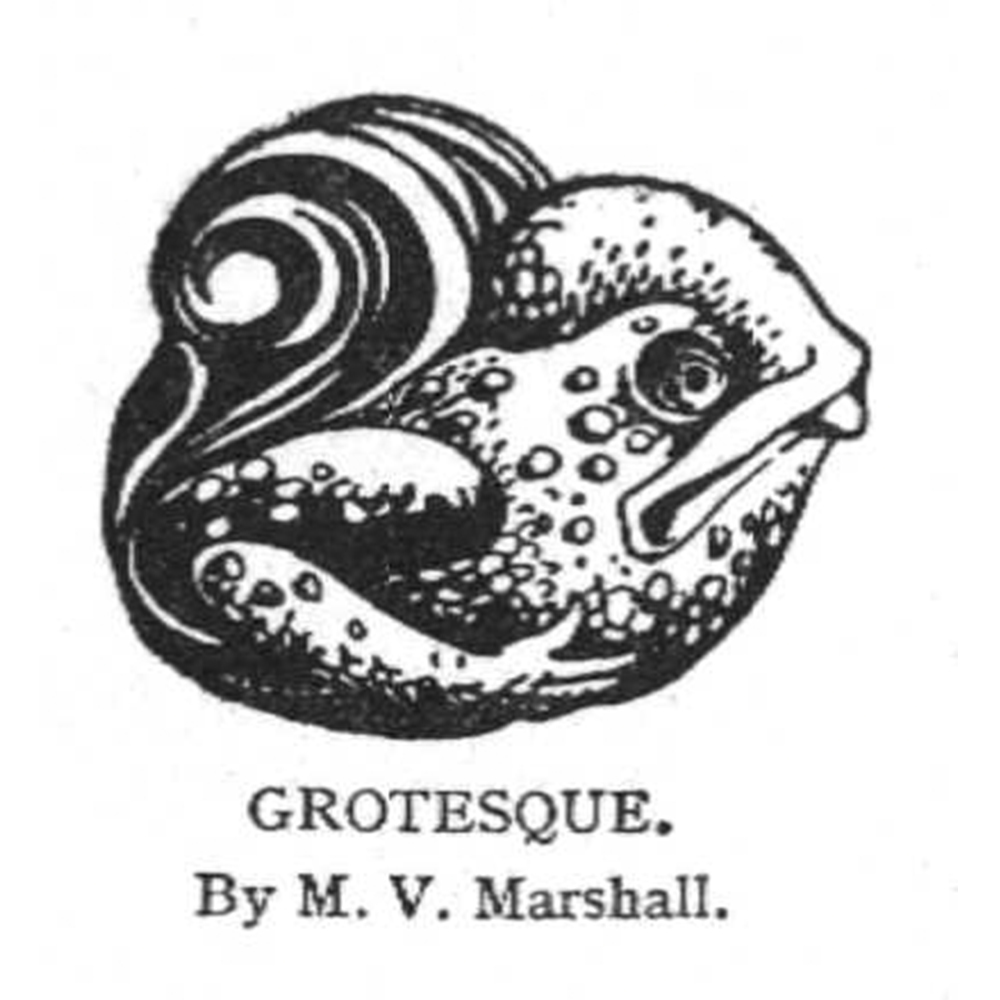
Grotesque by M.V. Marshall
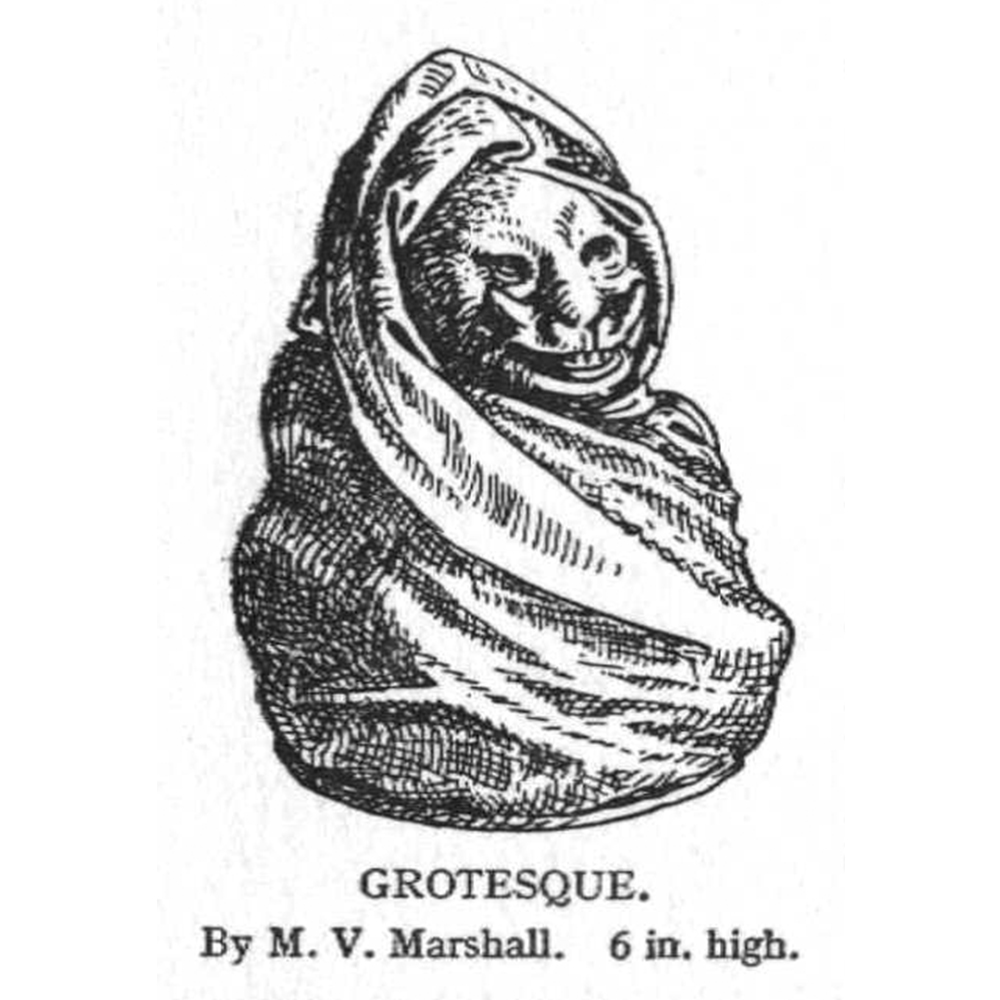
Grotesque by M.V. Marshall
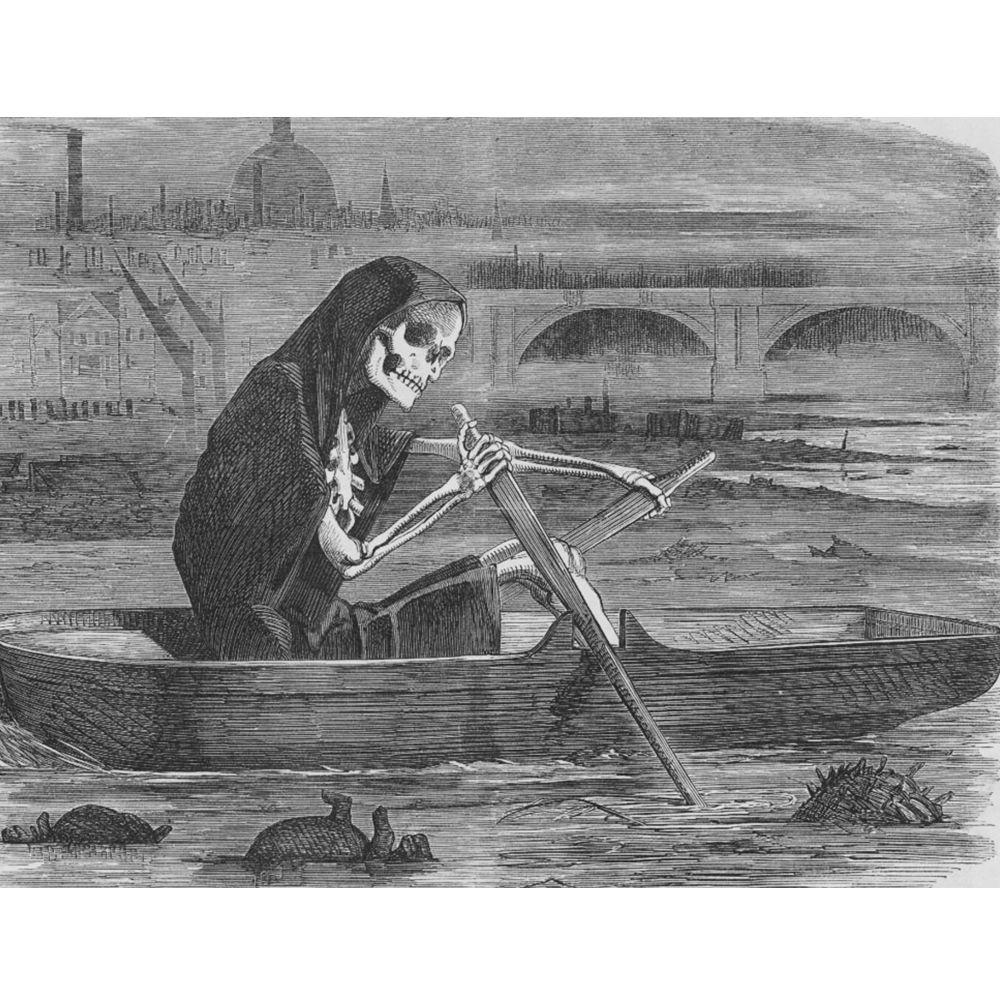
Silent Highwayman 1858
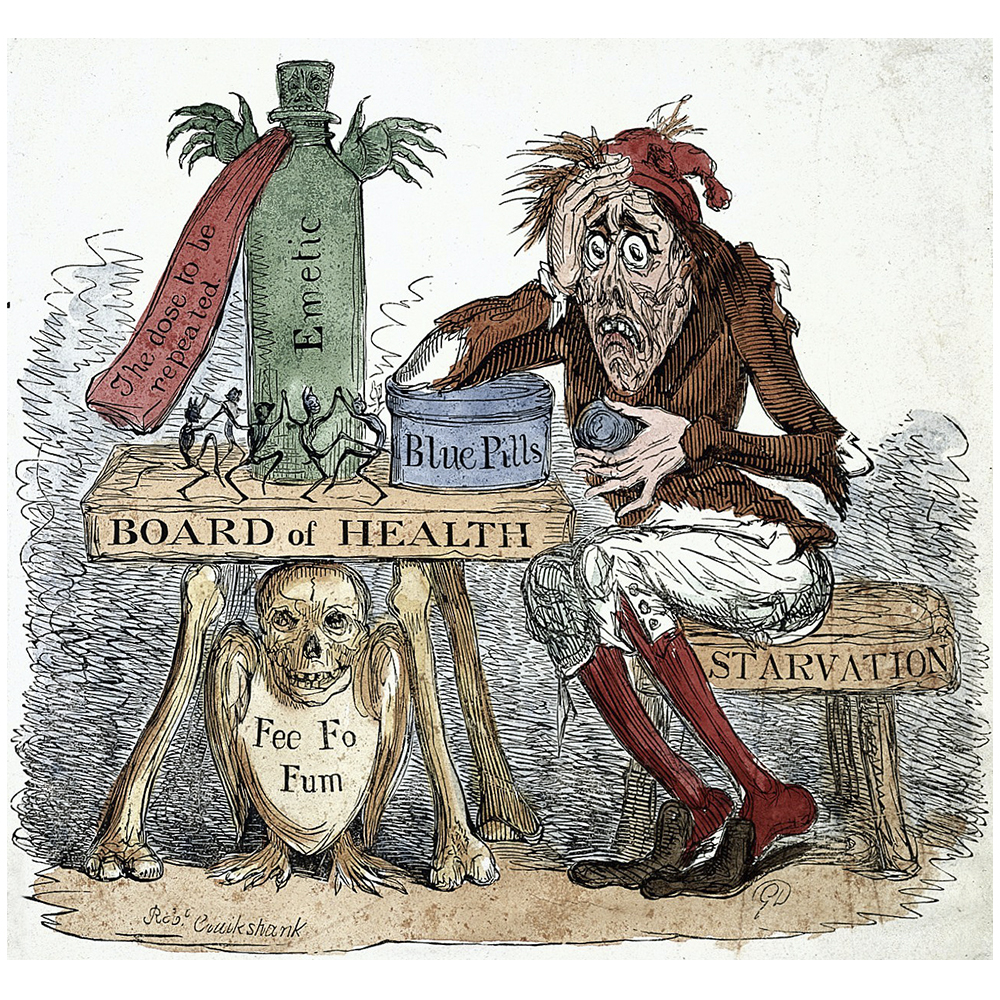
Cholera Patient by G. Cruikshank
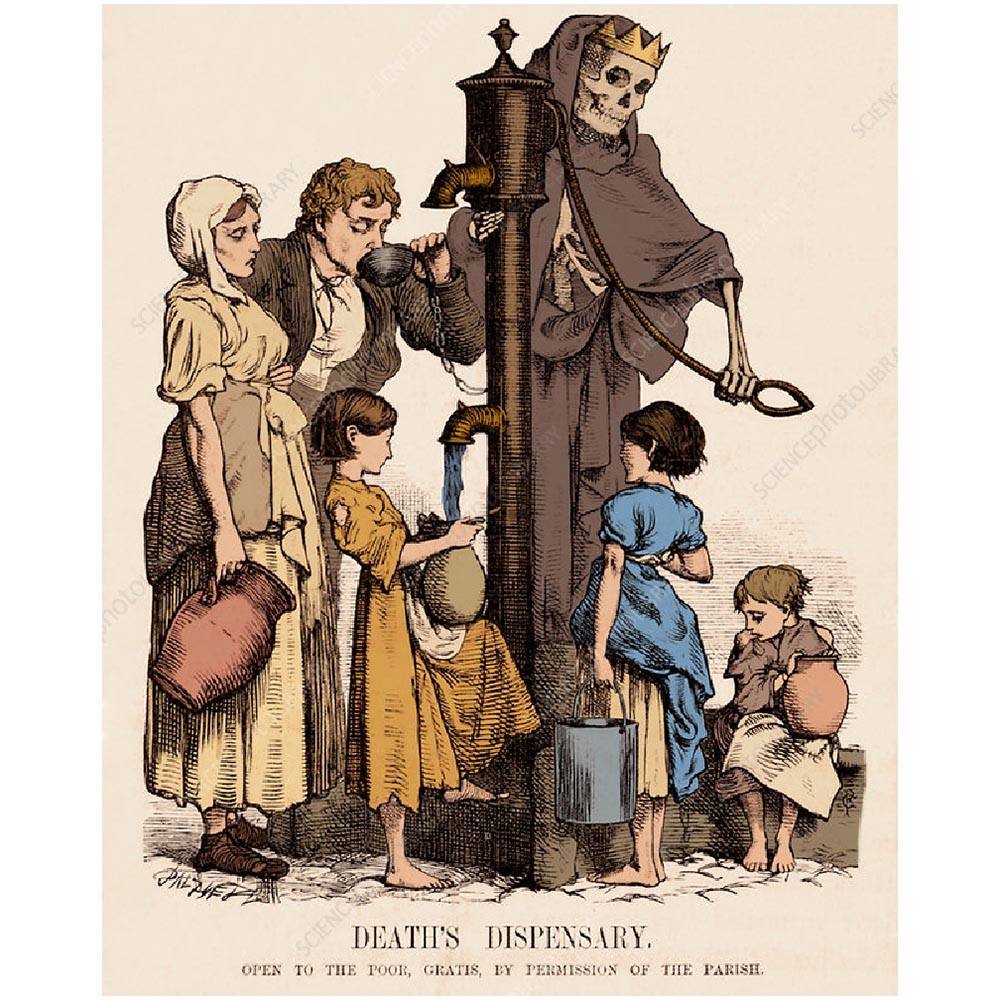
Death's Dispensary 1866
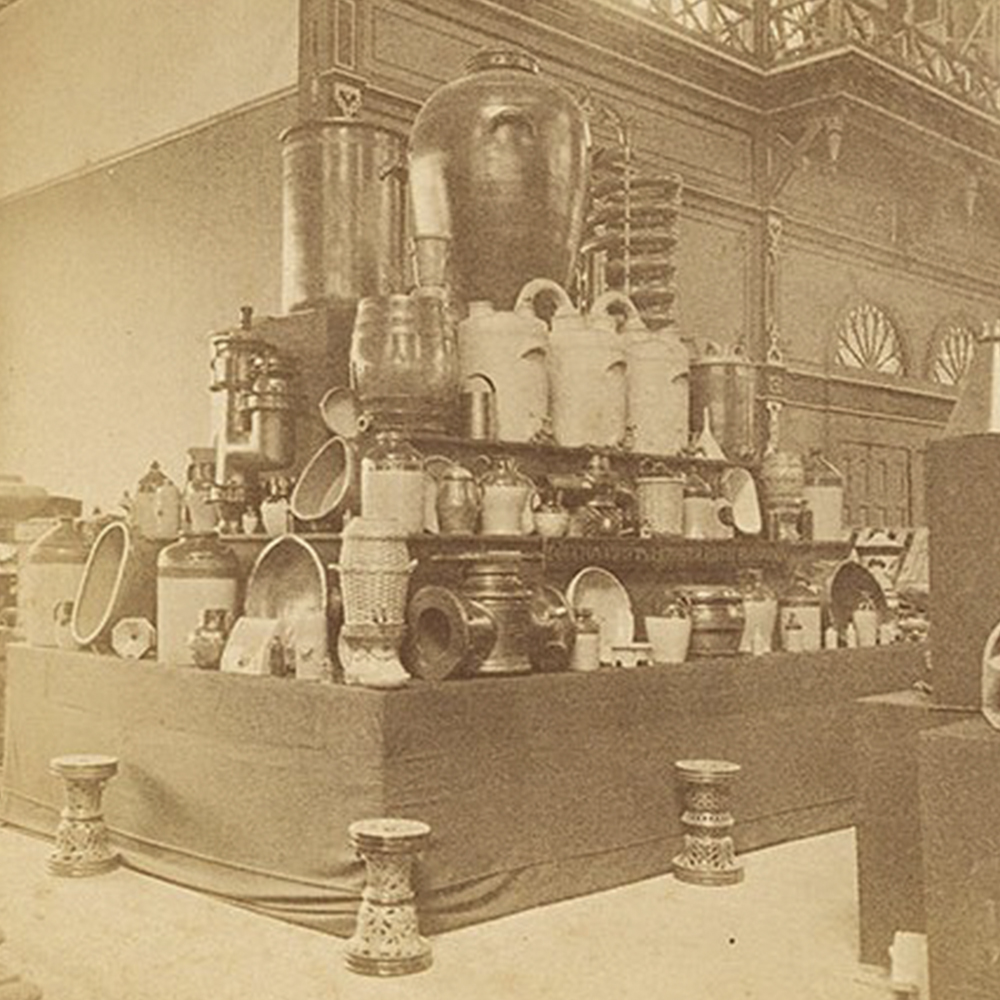
Doulton Water Filters at the Philadelphia Exhibition
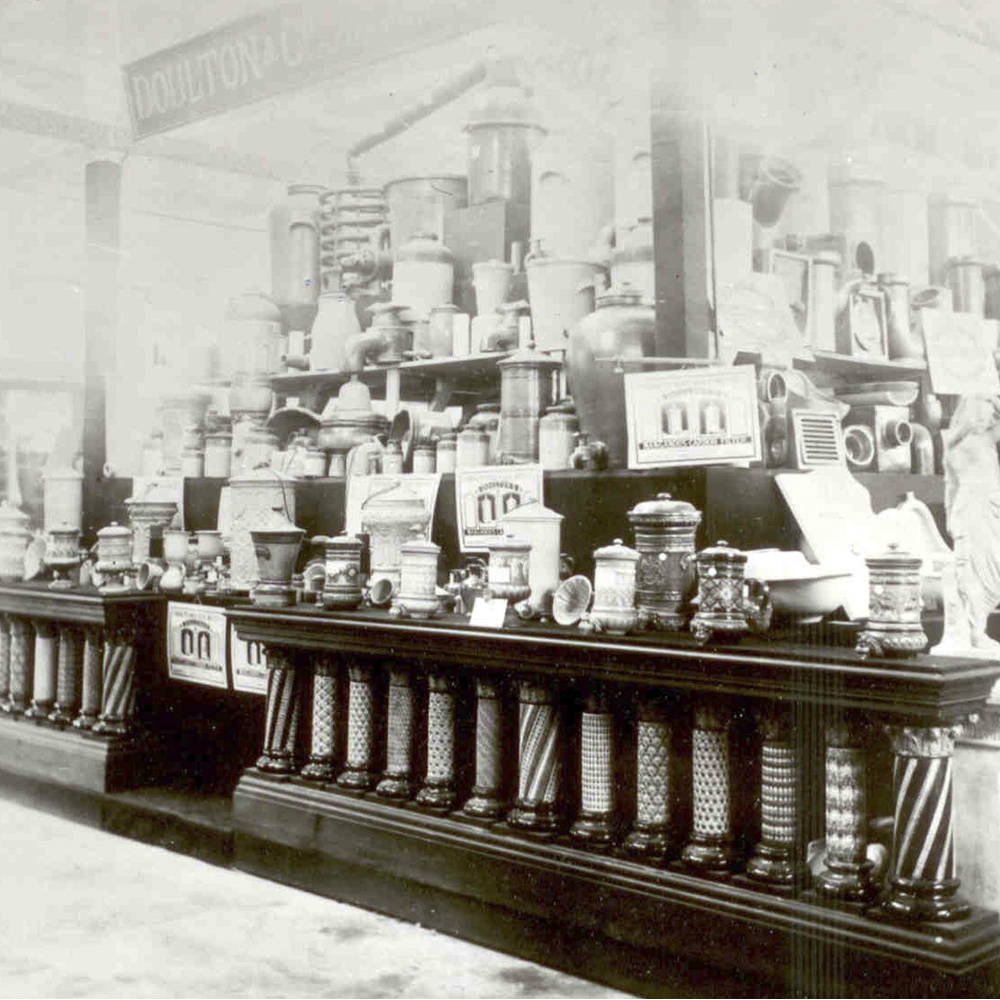
Doulton Water Filters Exhibit
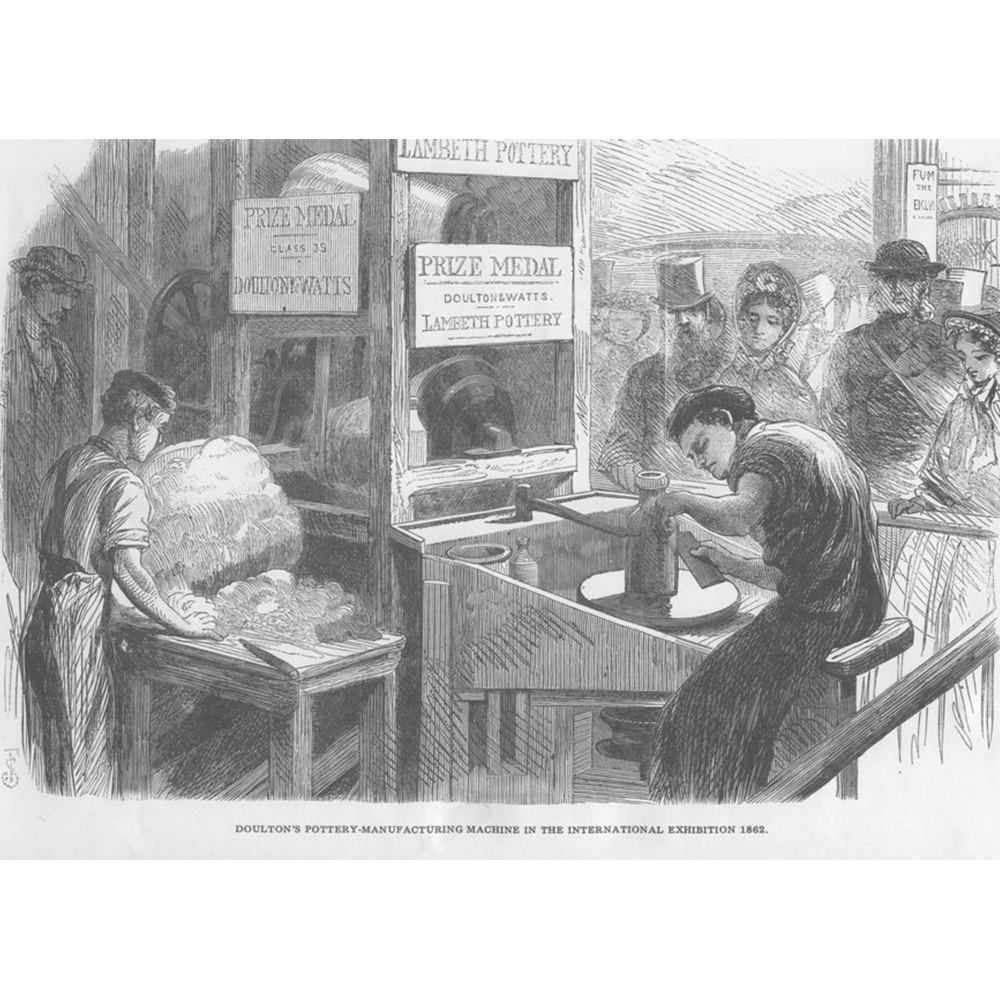
Doulton 1862 Exhibition
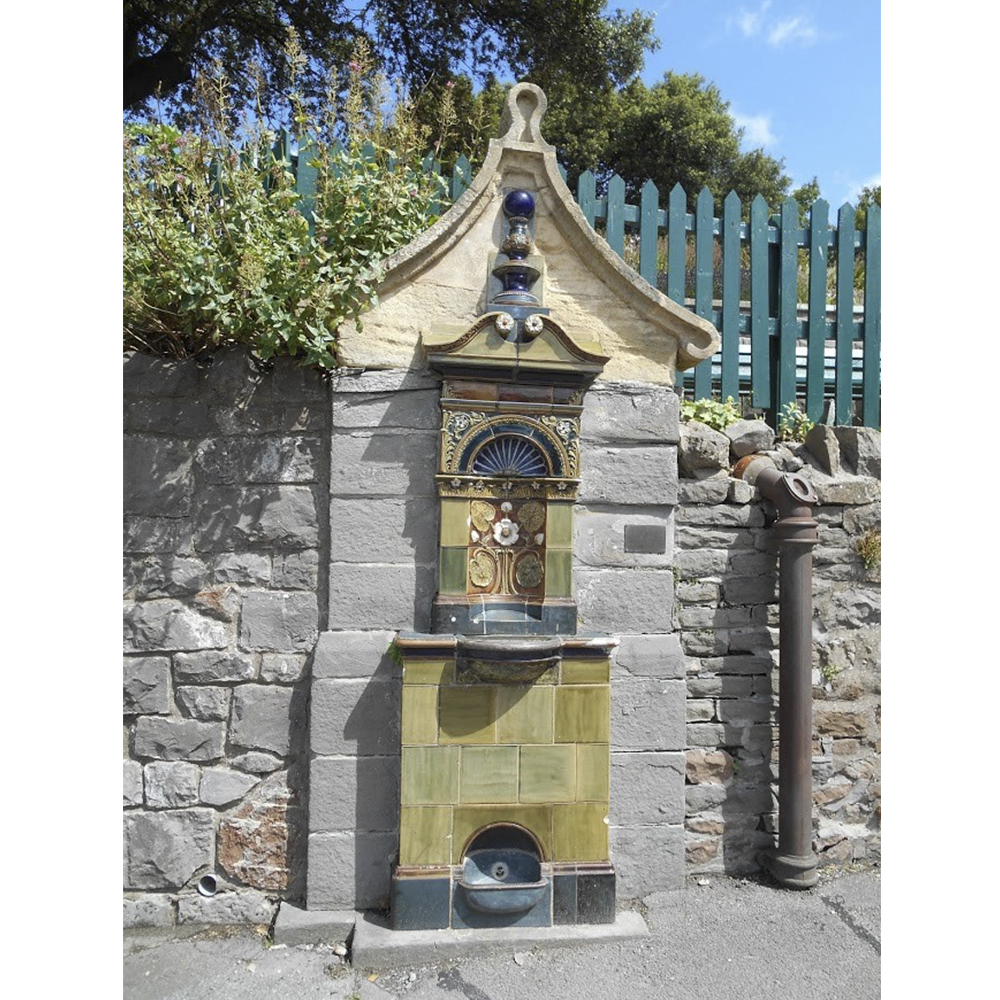
Doulton Clevedon Water Fountain
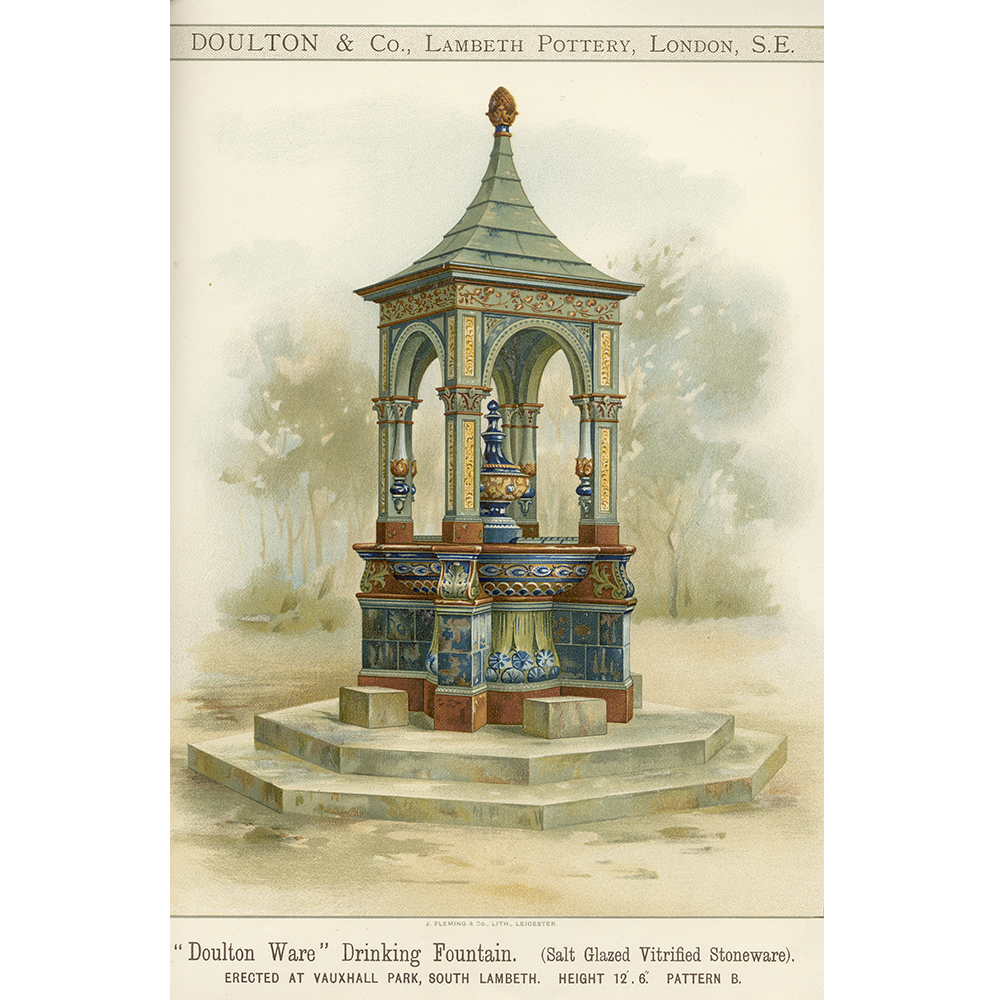
Doulton Vauxhall Water Fountain
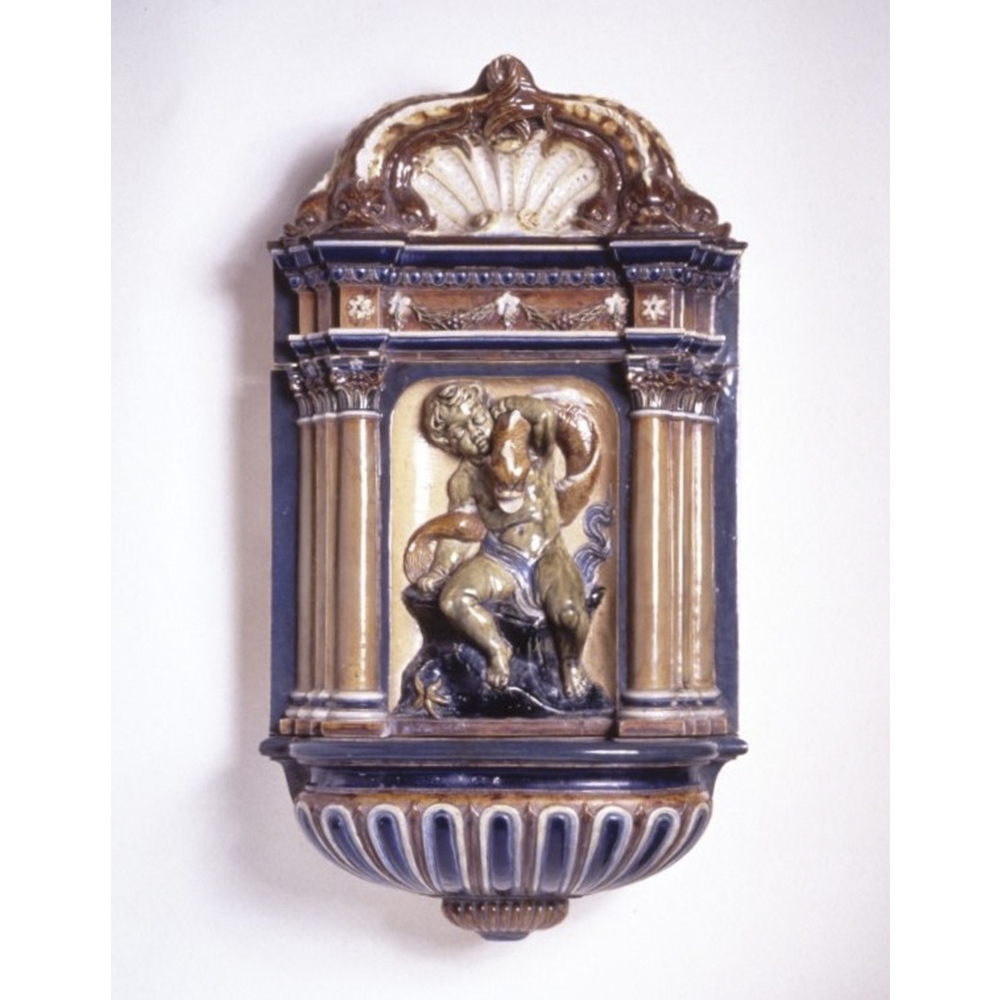
Doulton Water Fountain
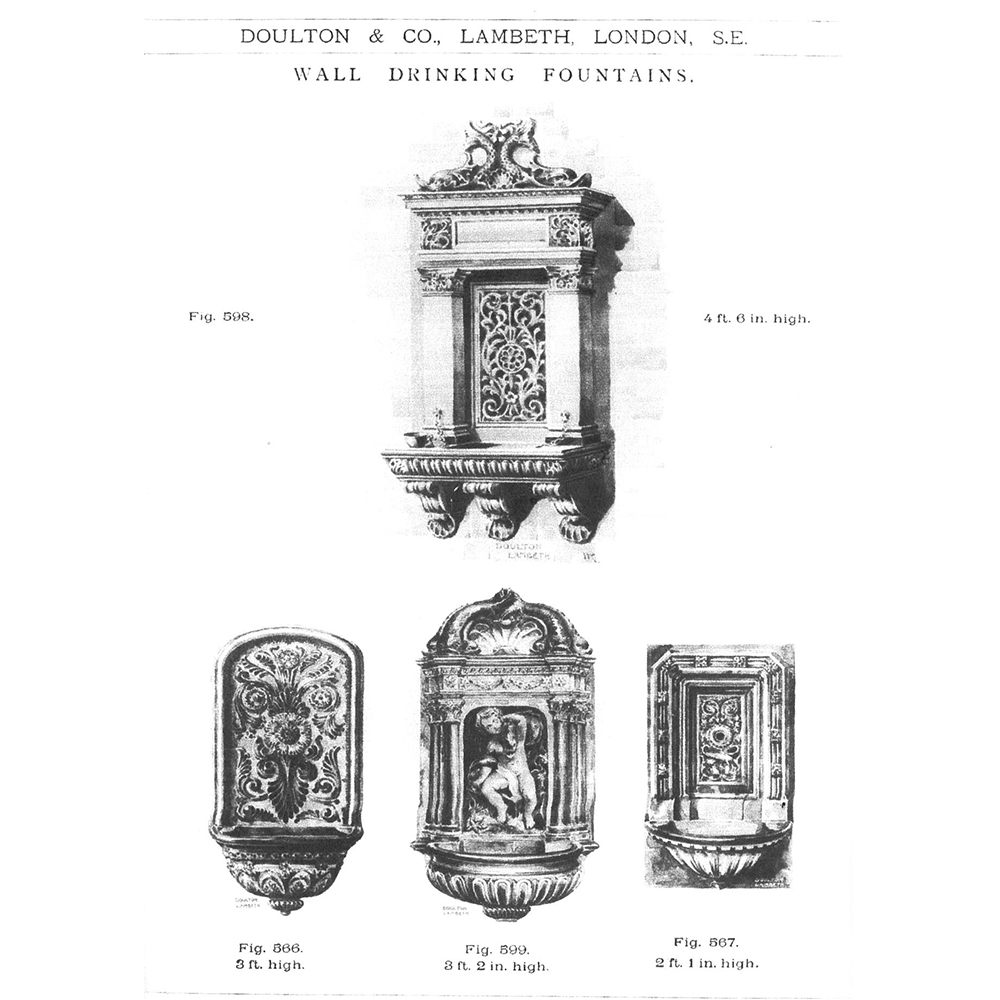
Doulton Wall Water Fountain catalog
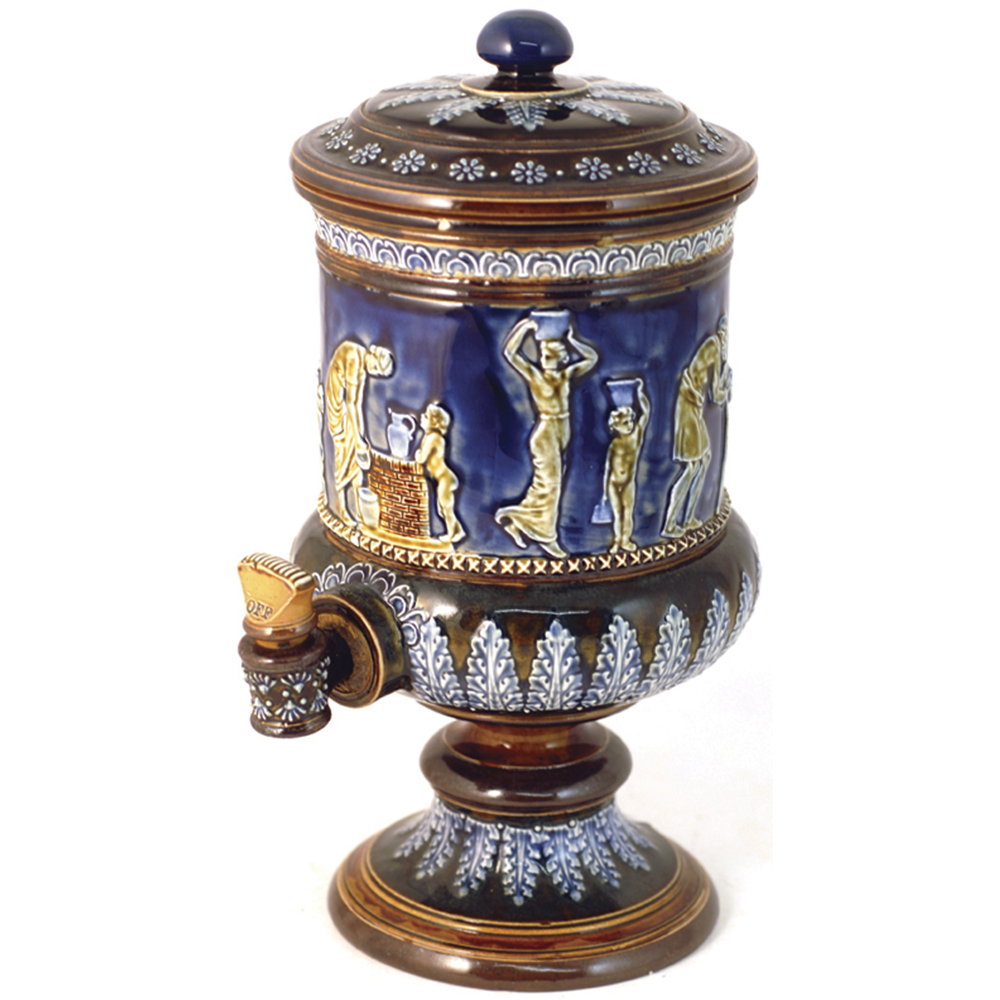
Doulton Water Filter
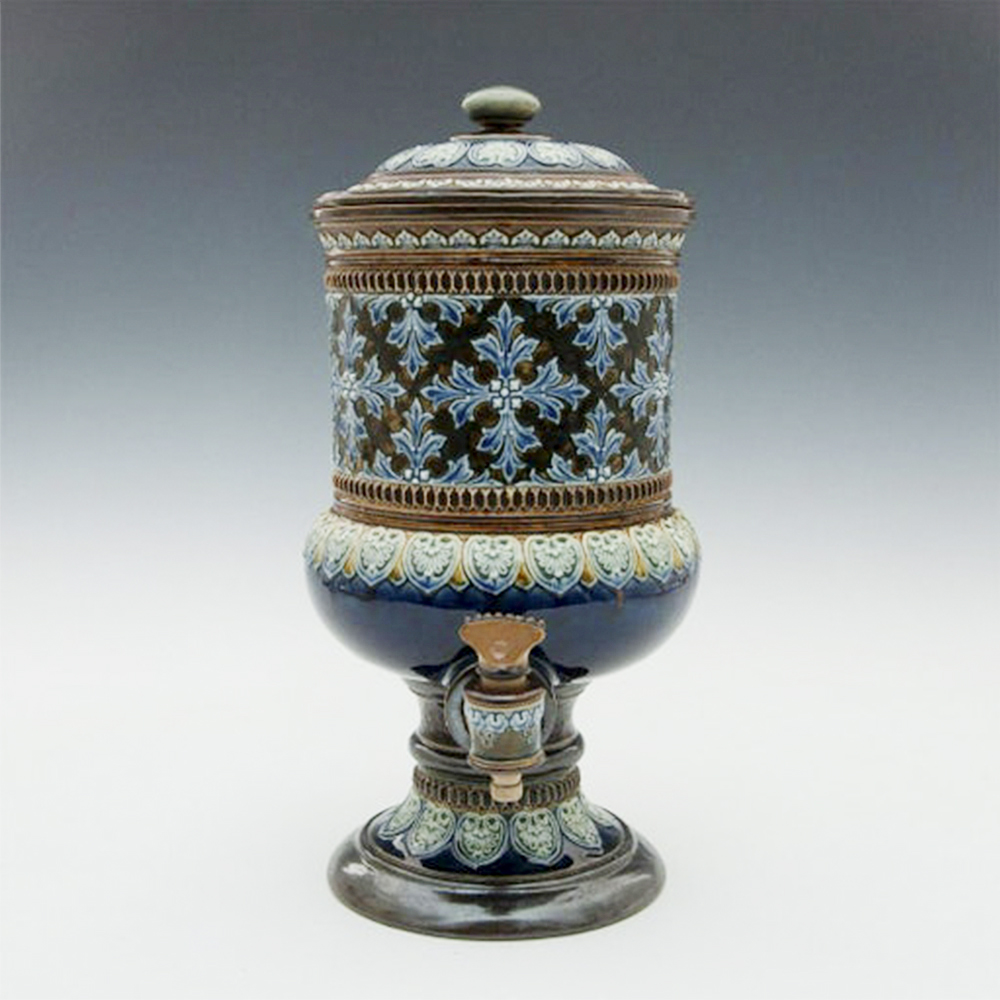
Doulton Water Filter
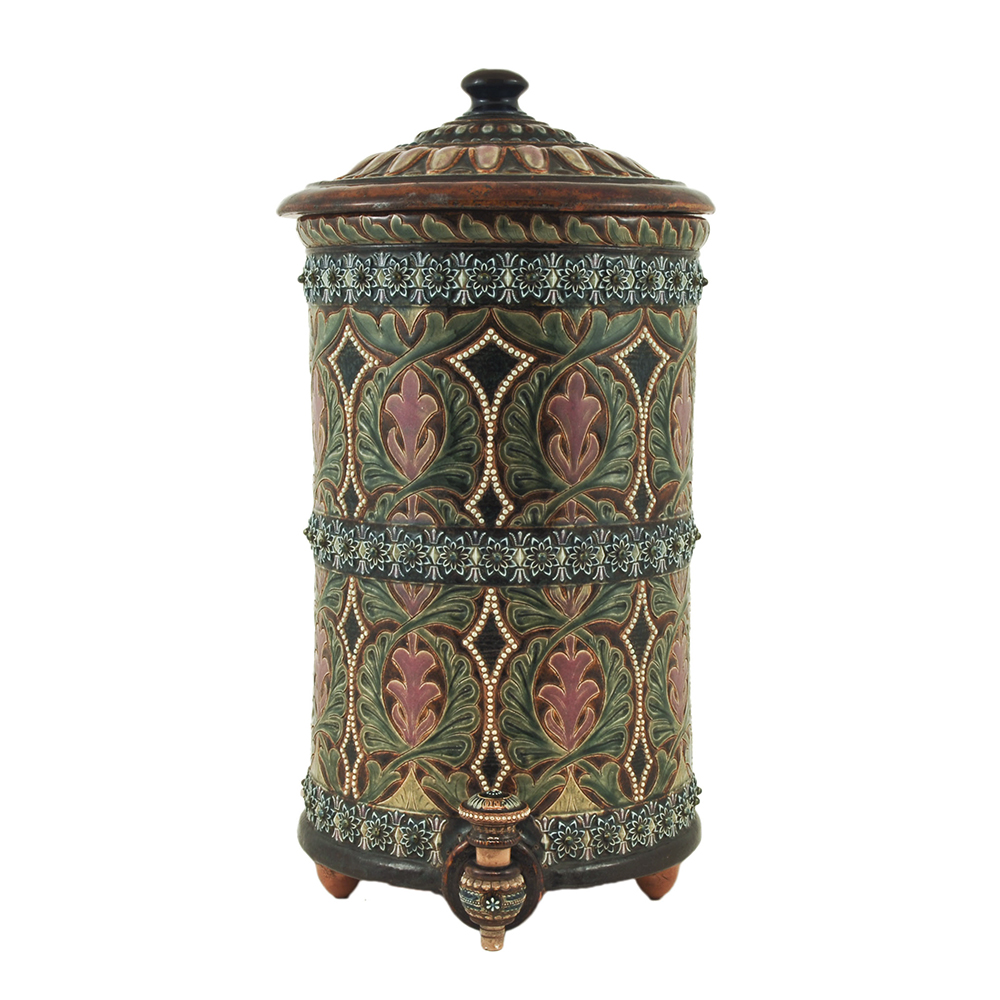
Doulton Water Filter
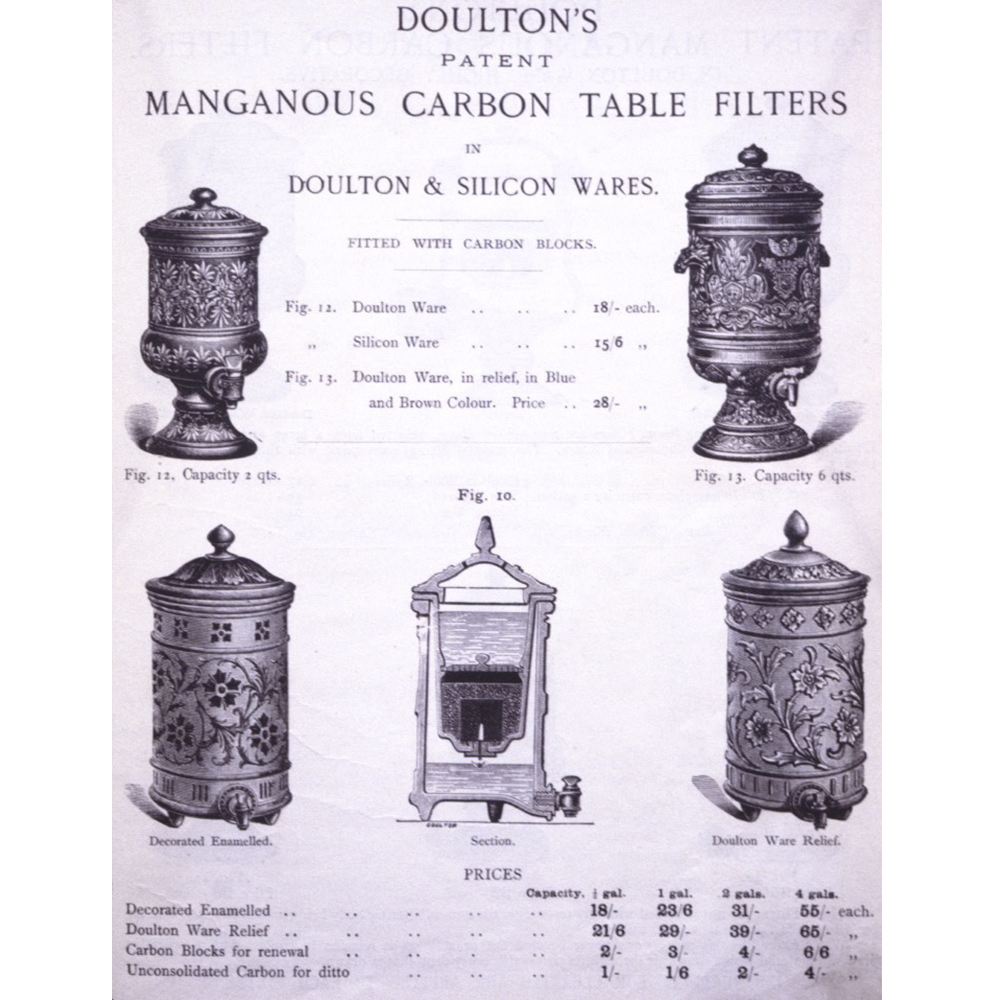
Doulton Water Filters catalog
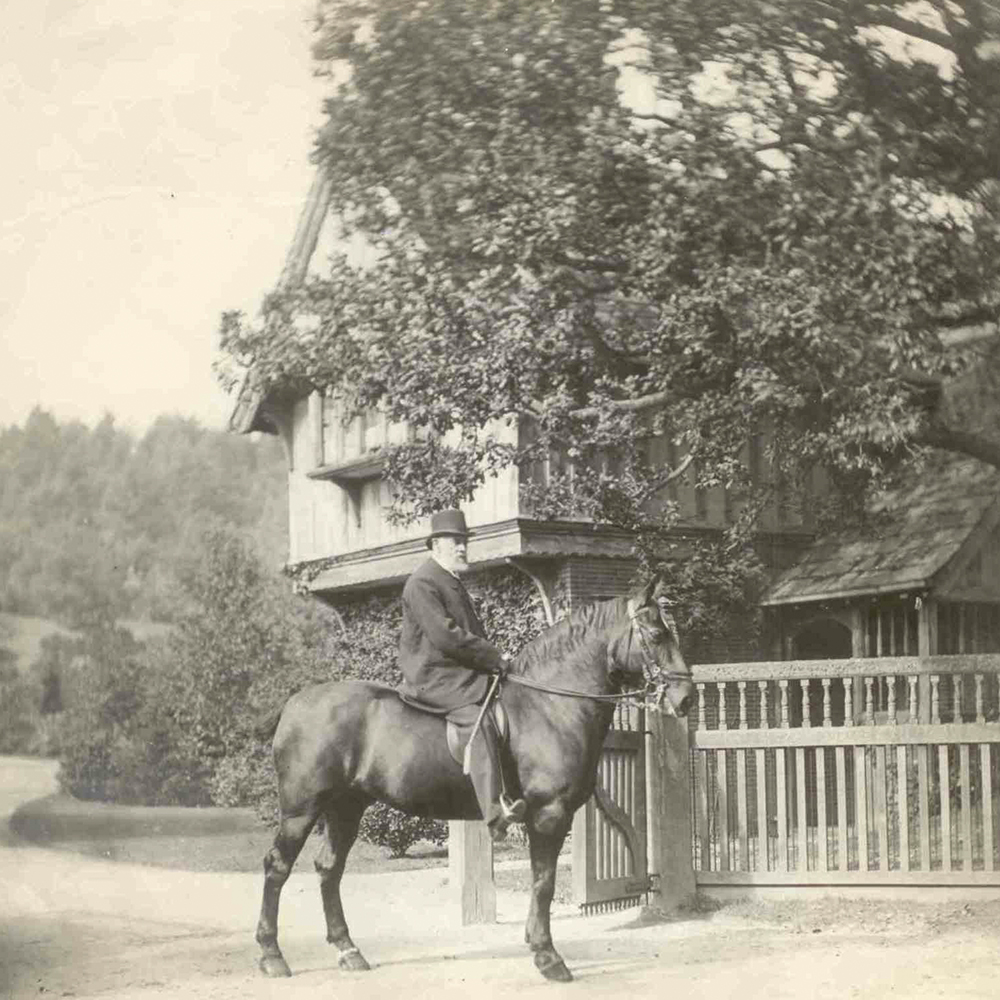
Henry Doulton
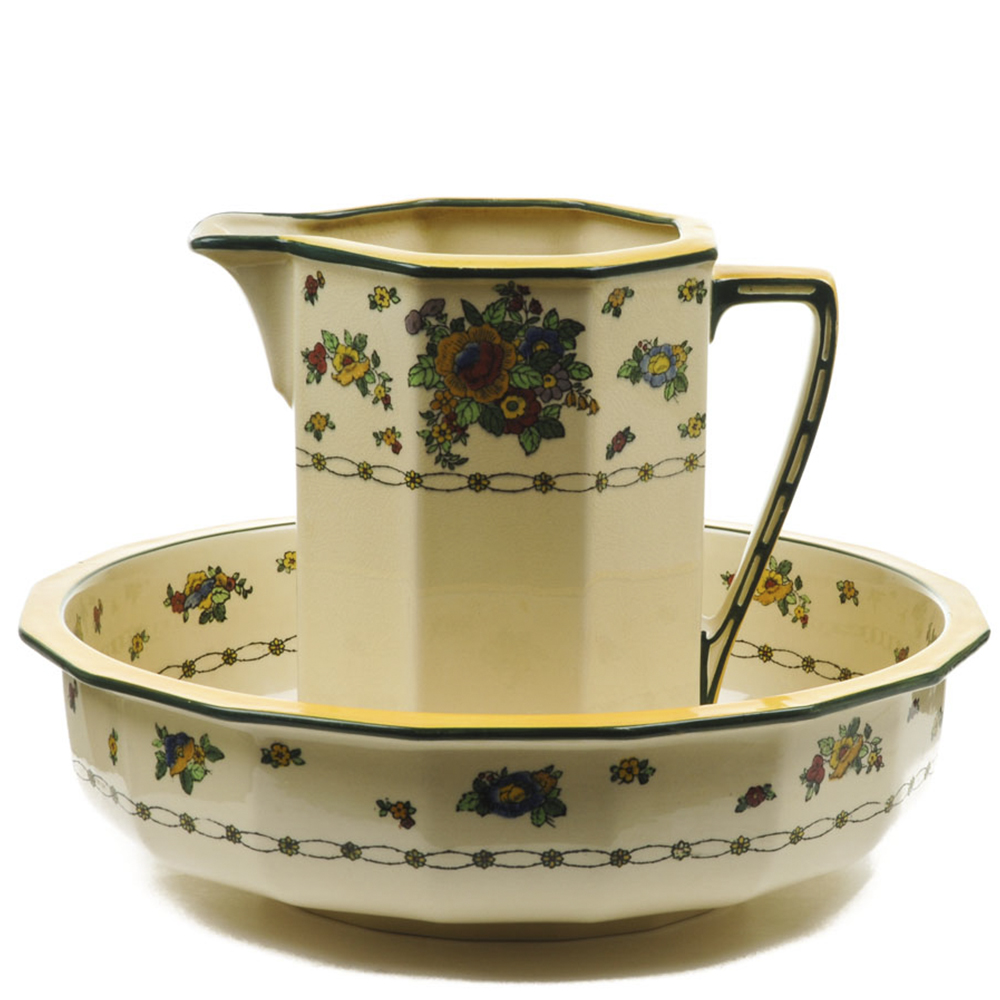
Doulton Burslem Toilet Set
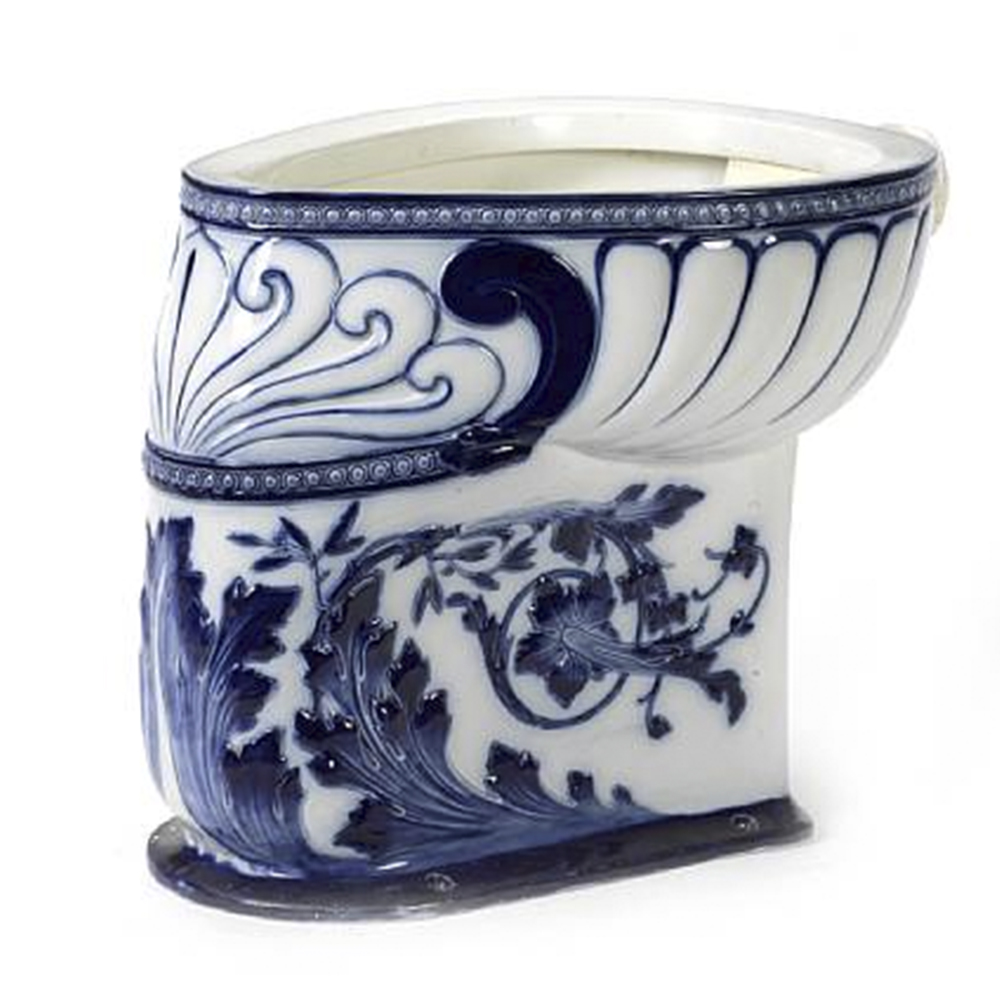
Combination water closet
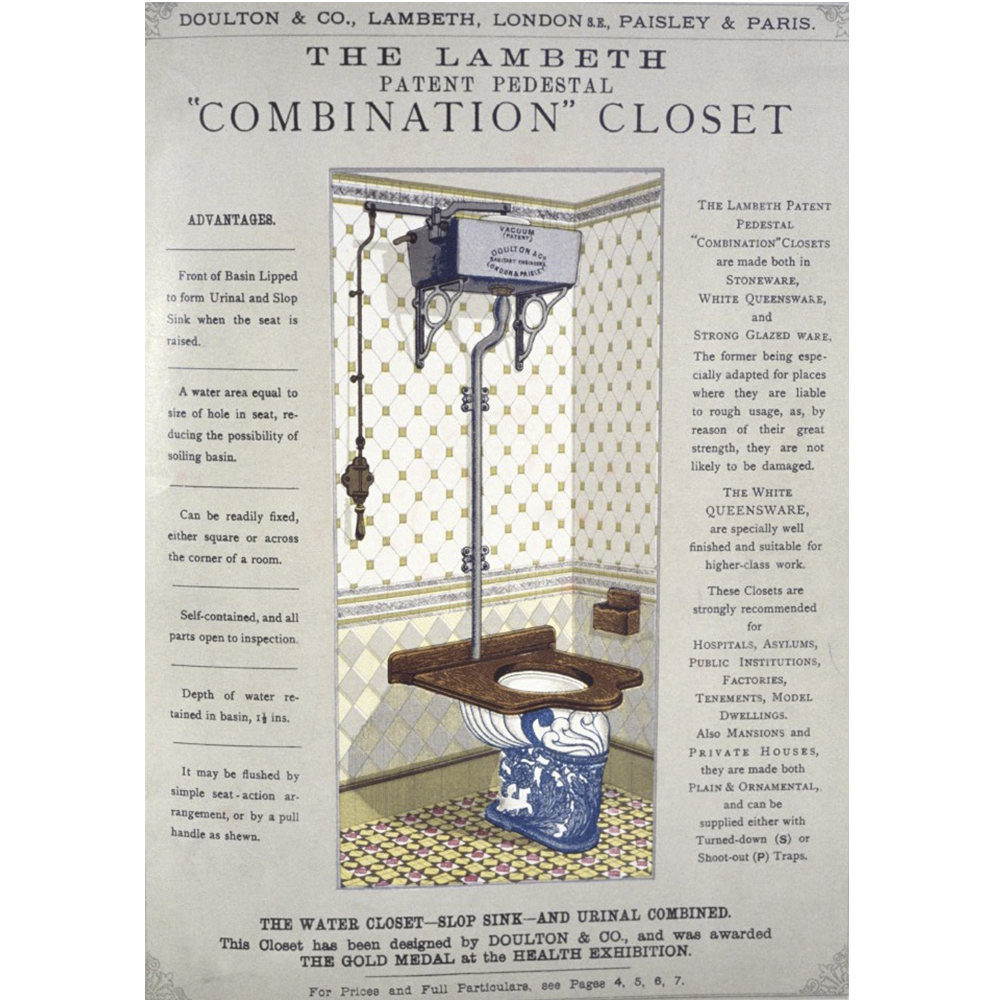
Combination water closet
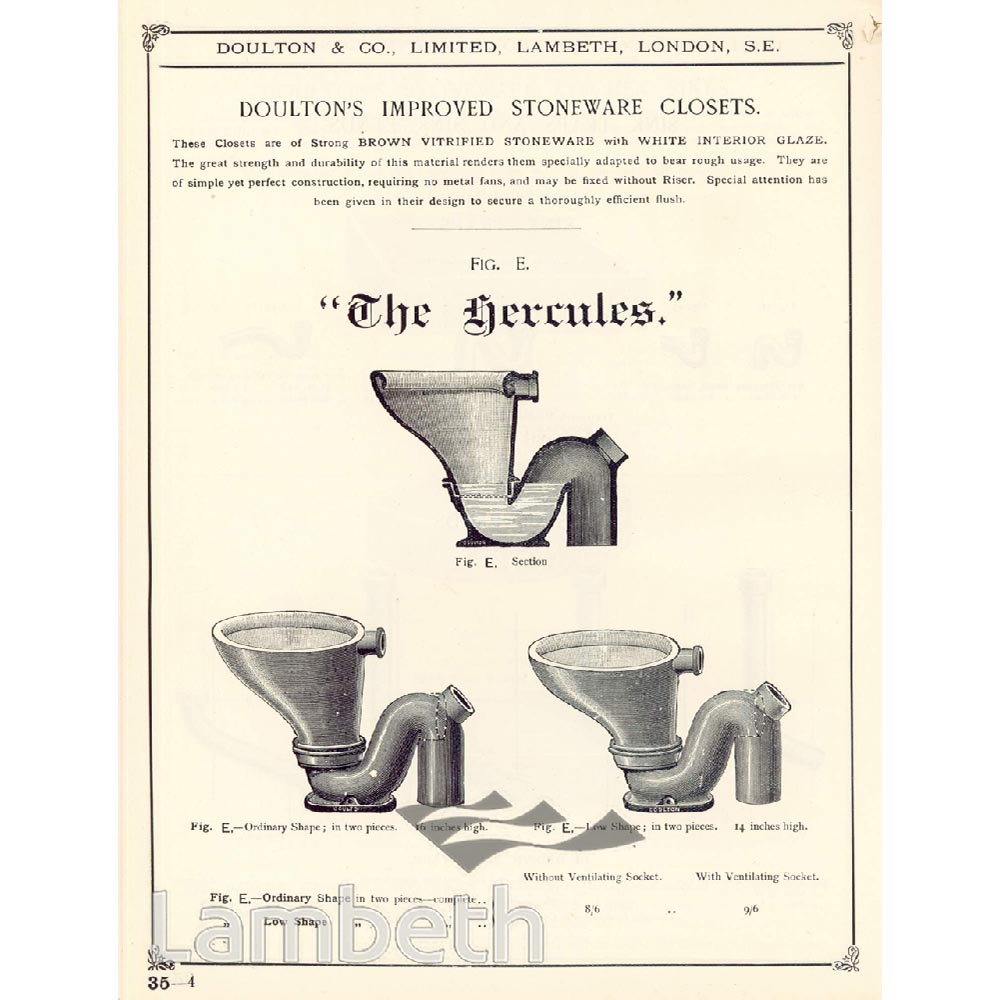
Doulton Hercules water closet
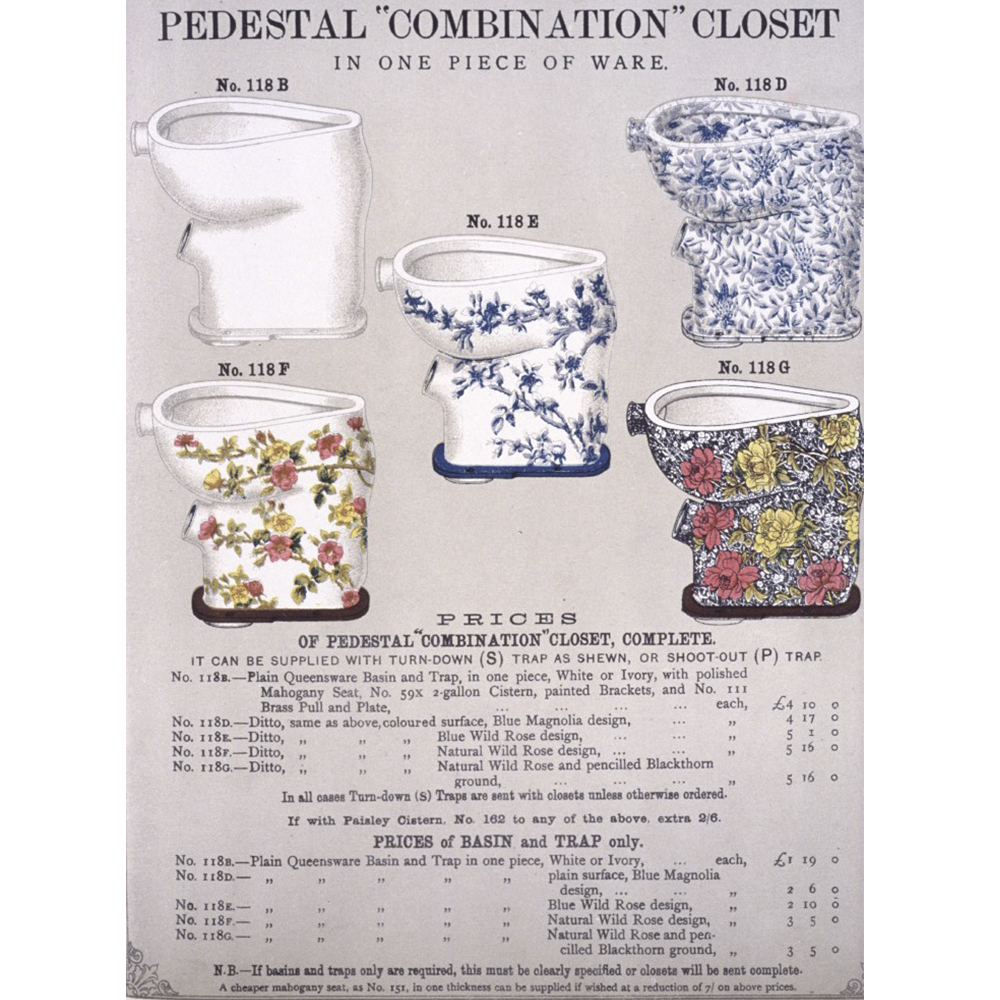
Selection of loos
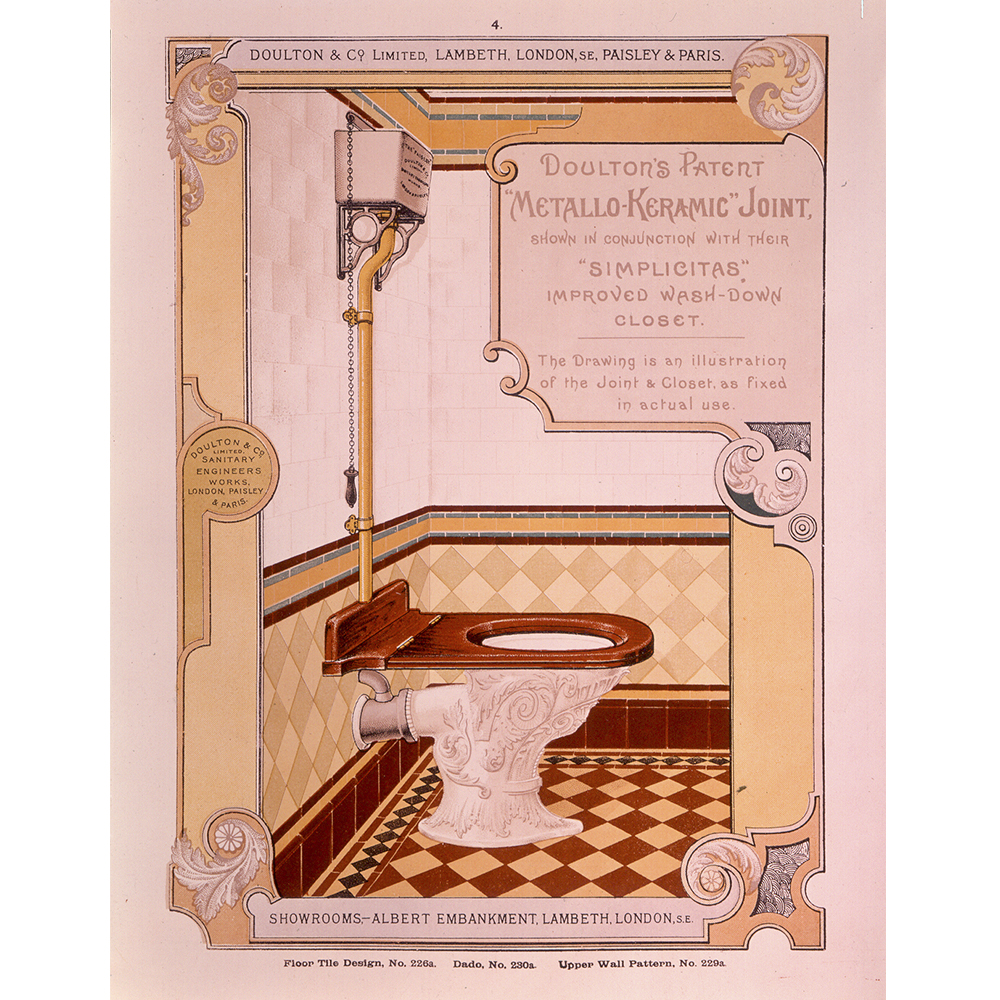
Doulton Simplicitas closet
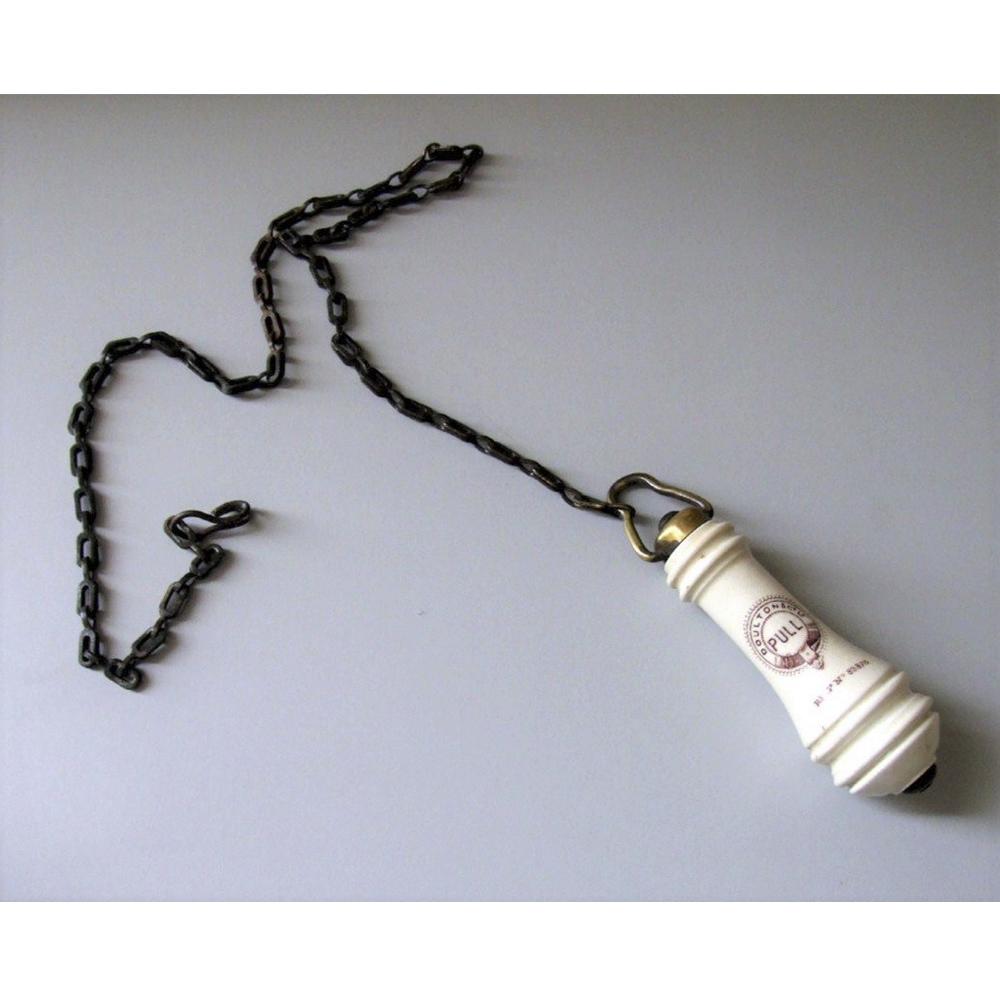
Doulton Toilet Pull
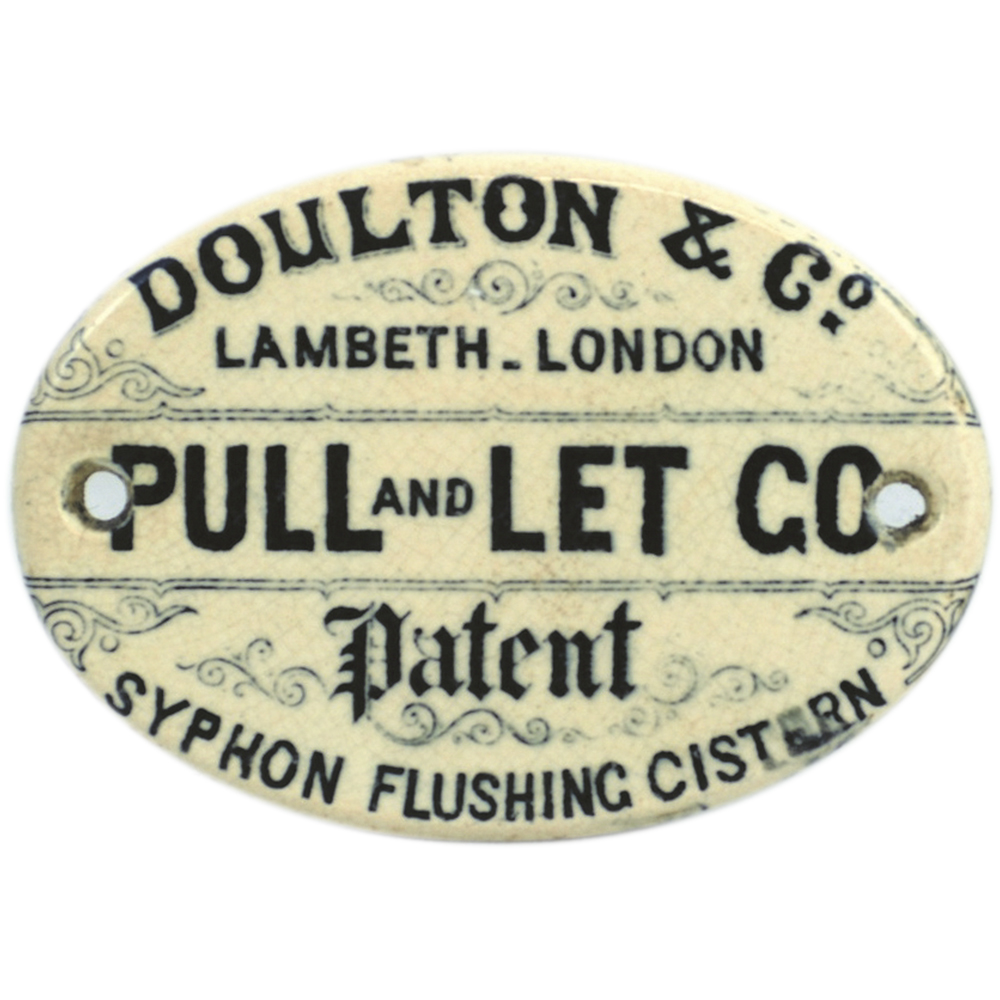
Doulton Pull and Let Go
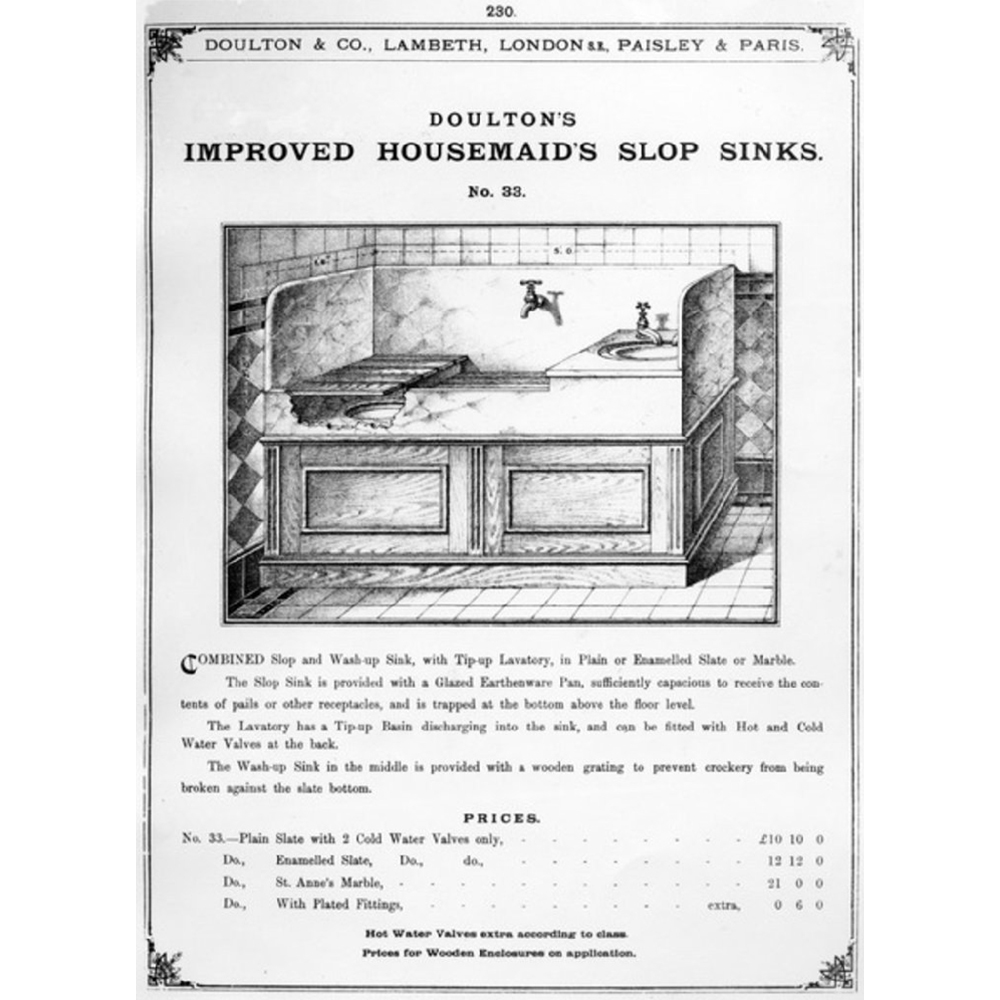
Doulton Slop Sink Advertisement
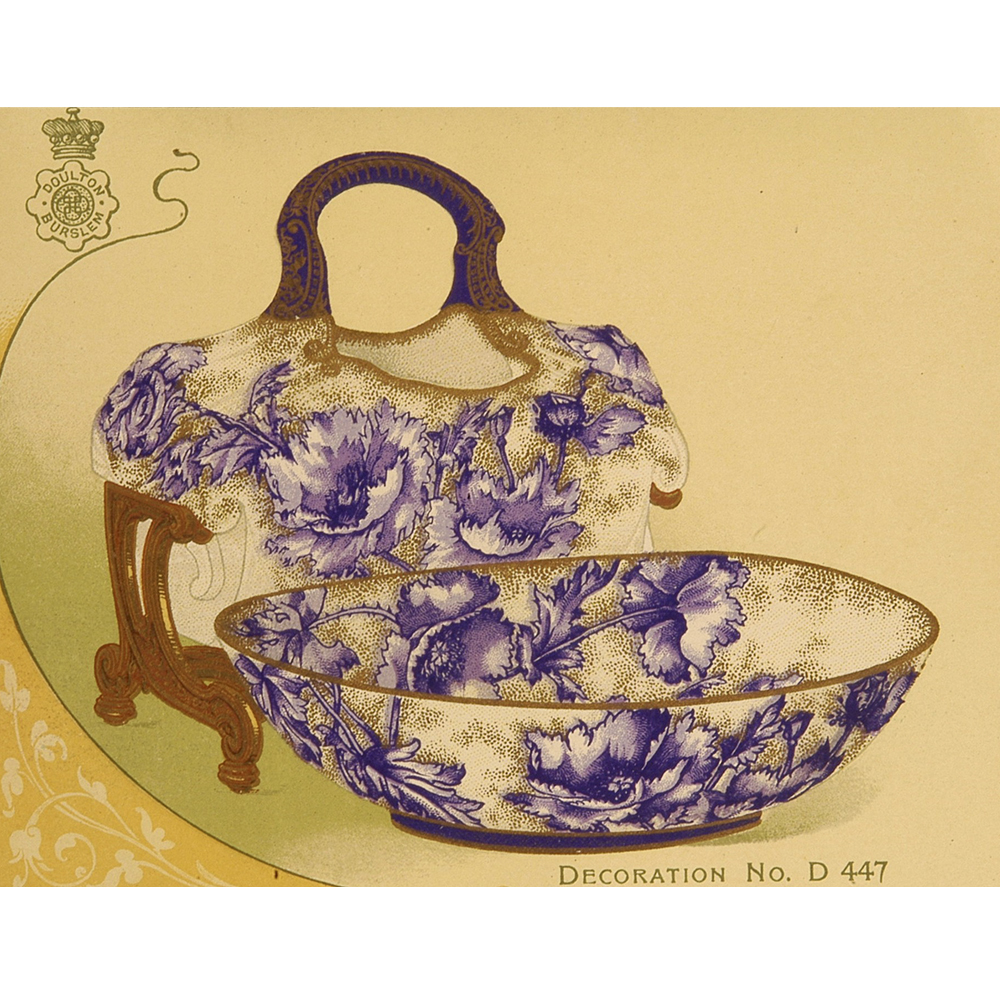
Royle's Patent Aquarius
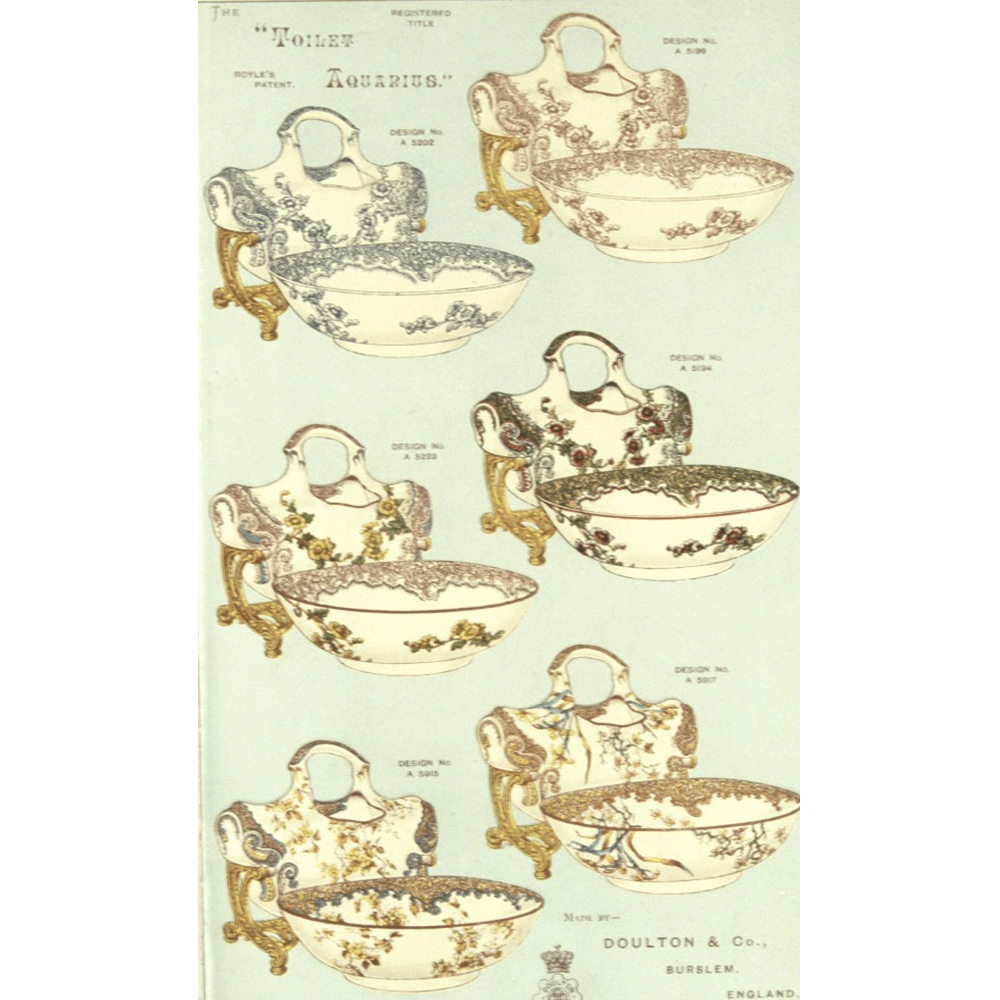
Royle's Patent Aquarius catalog
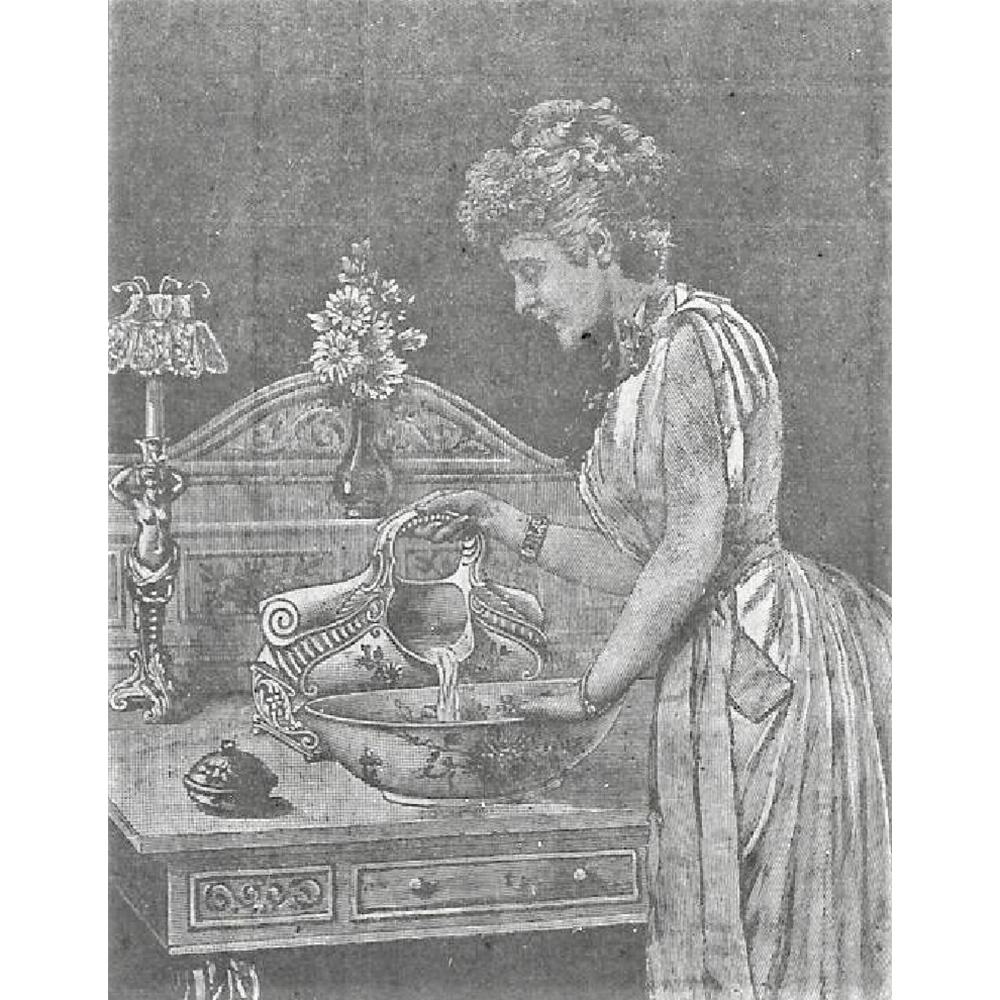
Royle's Patent Aquarius

Royal Doulton Mark
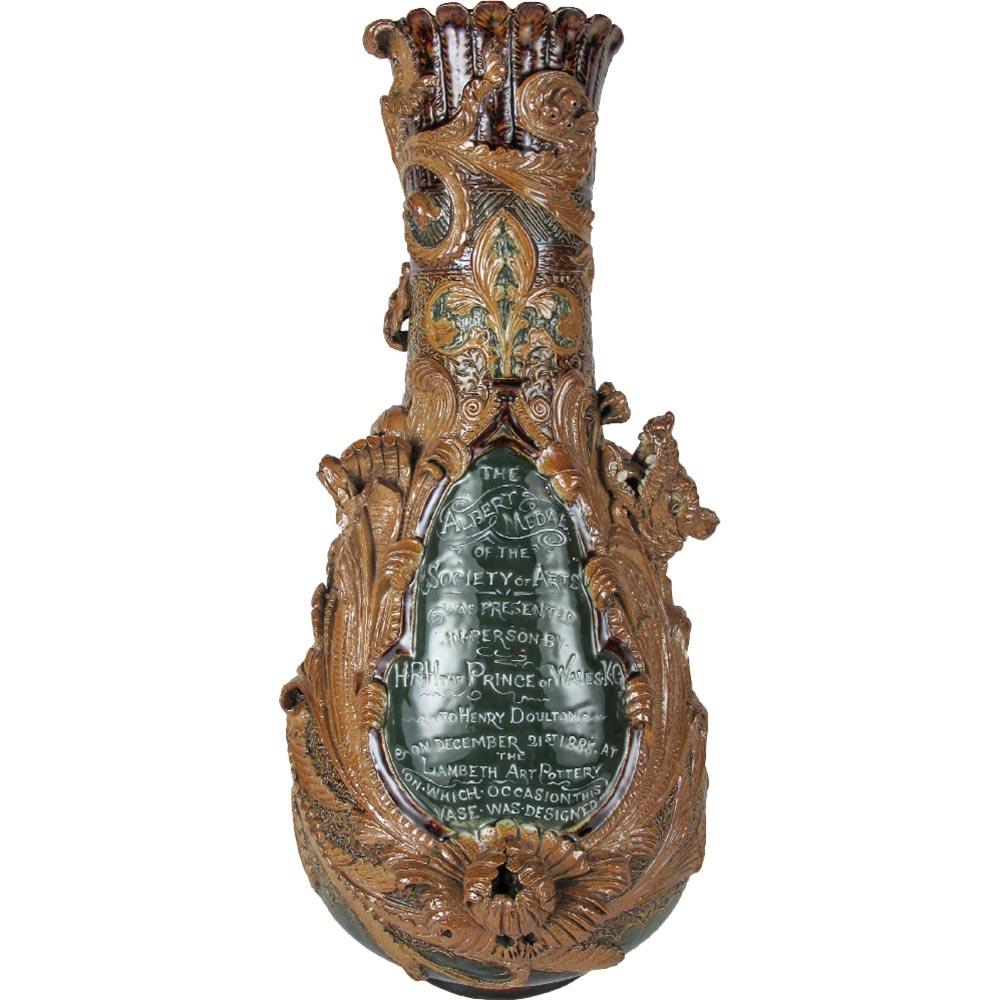
Doulton Lambeth Albert Medal Vase
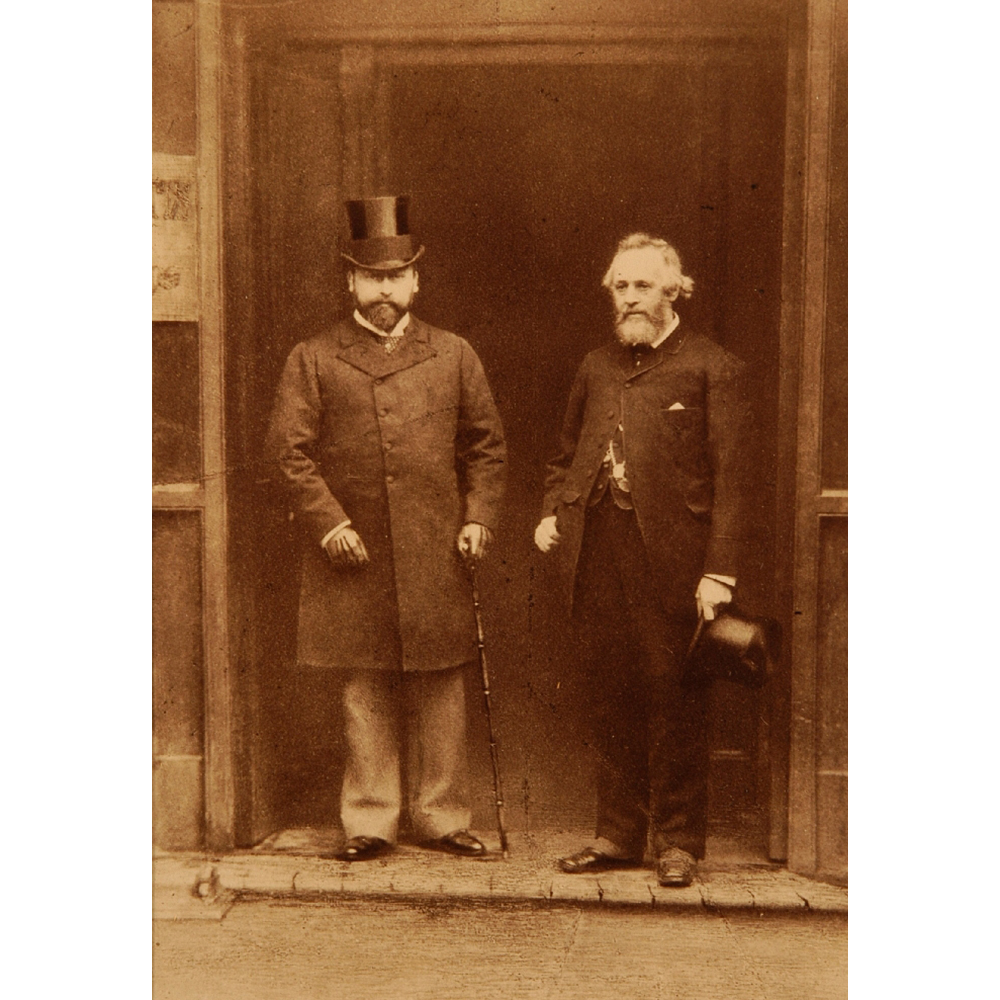
Henry Doulton & Prince of Wales 1885
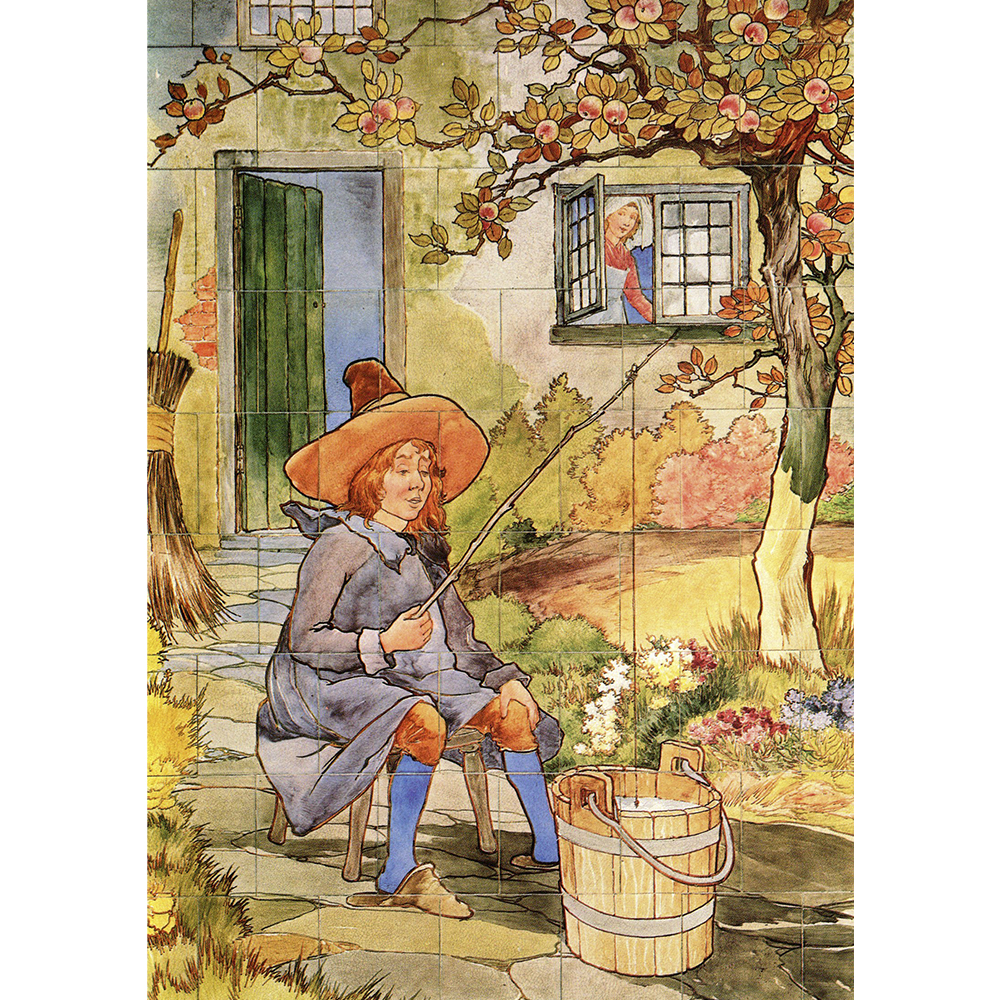
Royal Doulton Simple Simon Tile
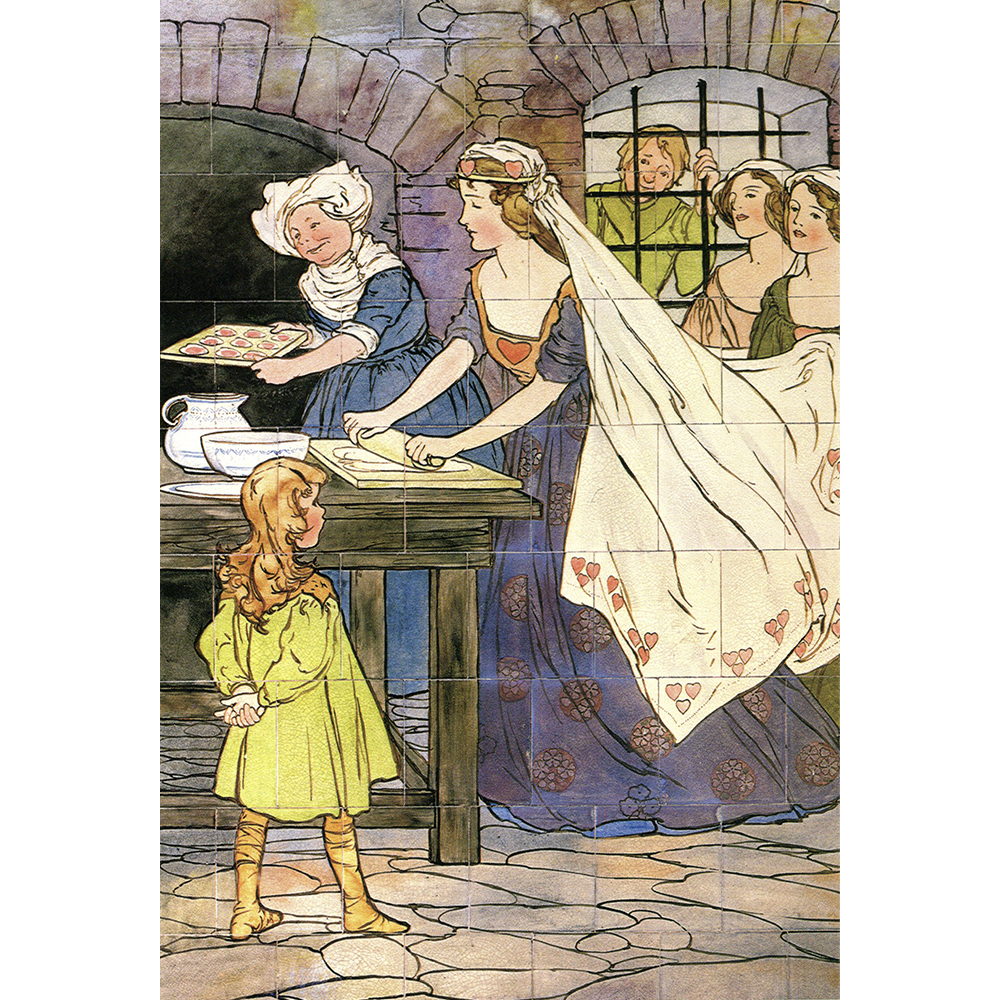
Royal Doulton Queen of Hearts Tile
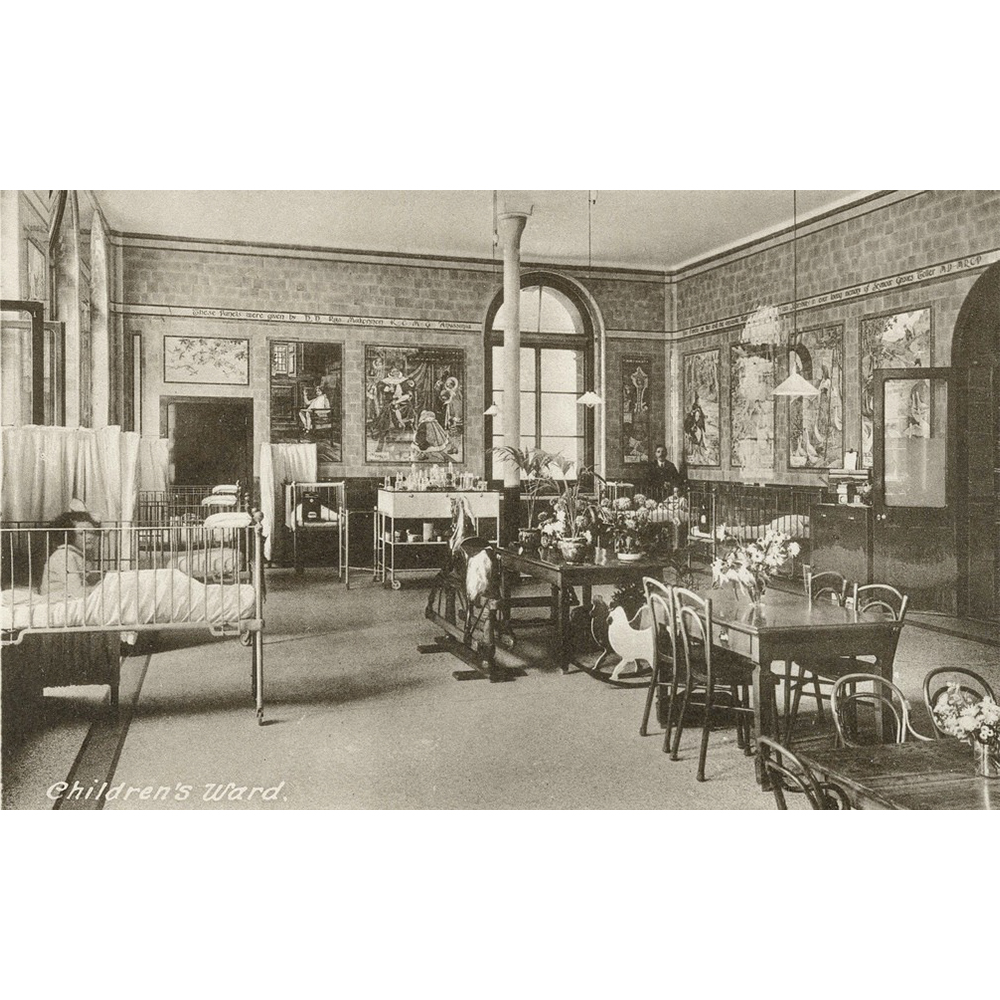
St. Thomas Hospital
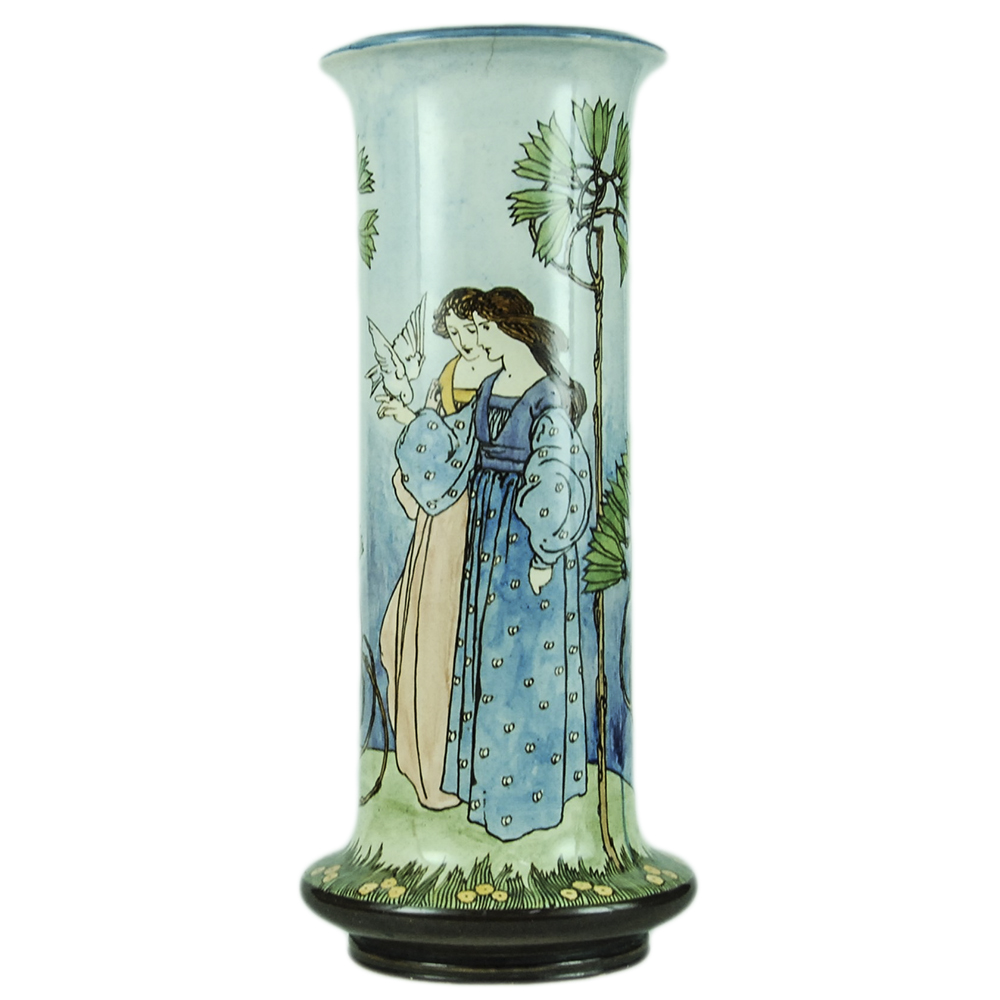
Royal Doulton Maidens with Doves Vase by M.E. Thompson
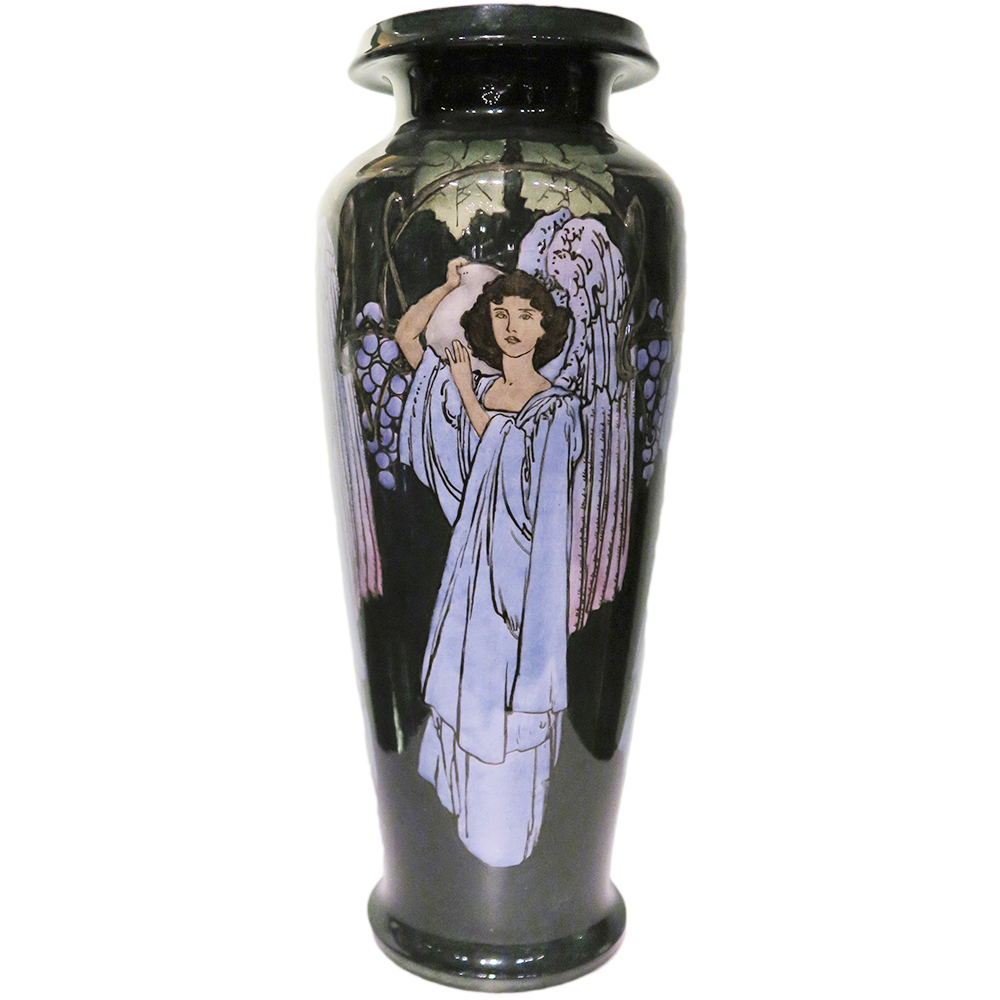
Royal Doulton Angel Vase by M.E. Thompson
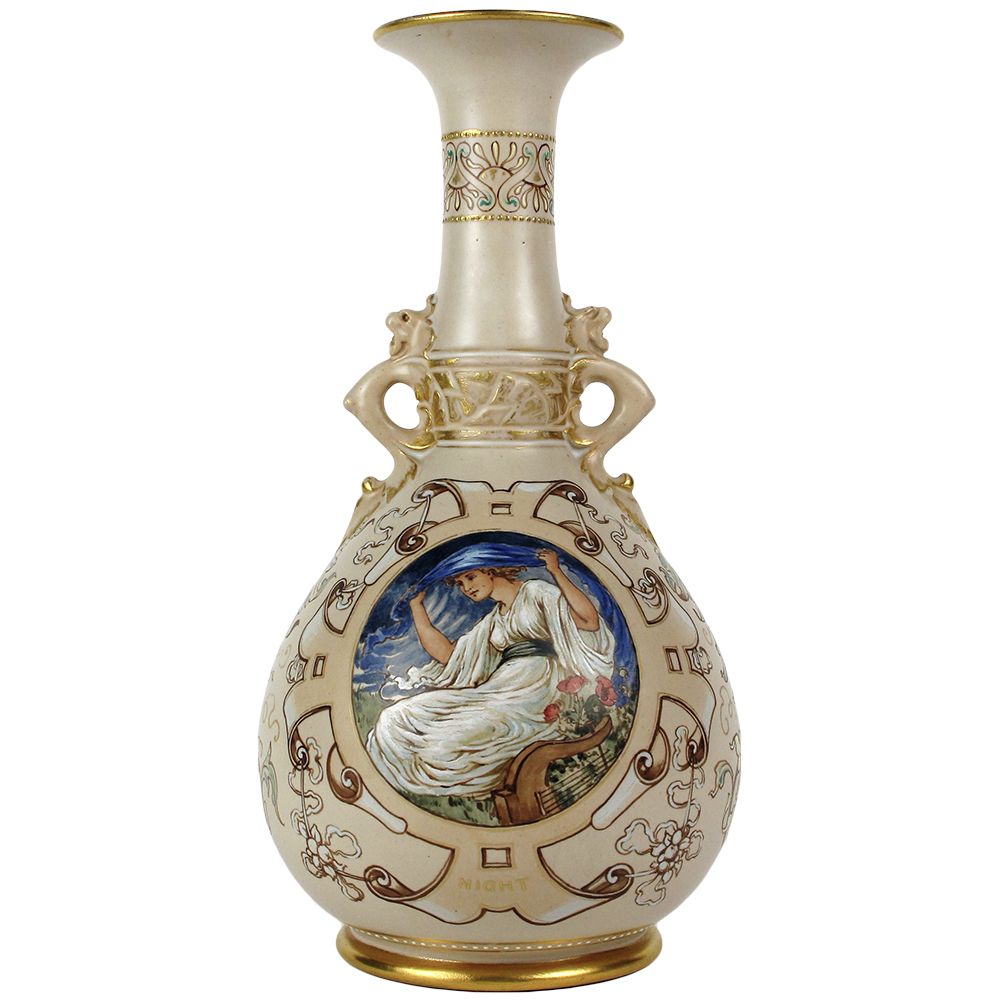
Doulton Lambeth Night Vase by W. Rowe
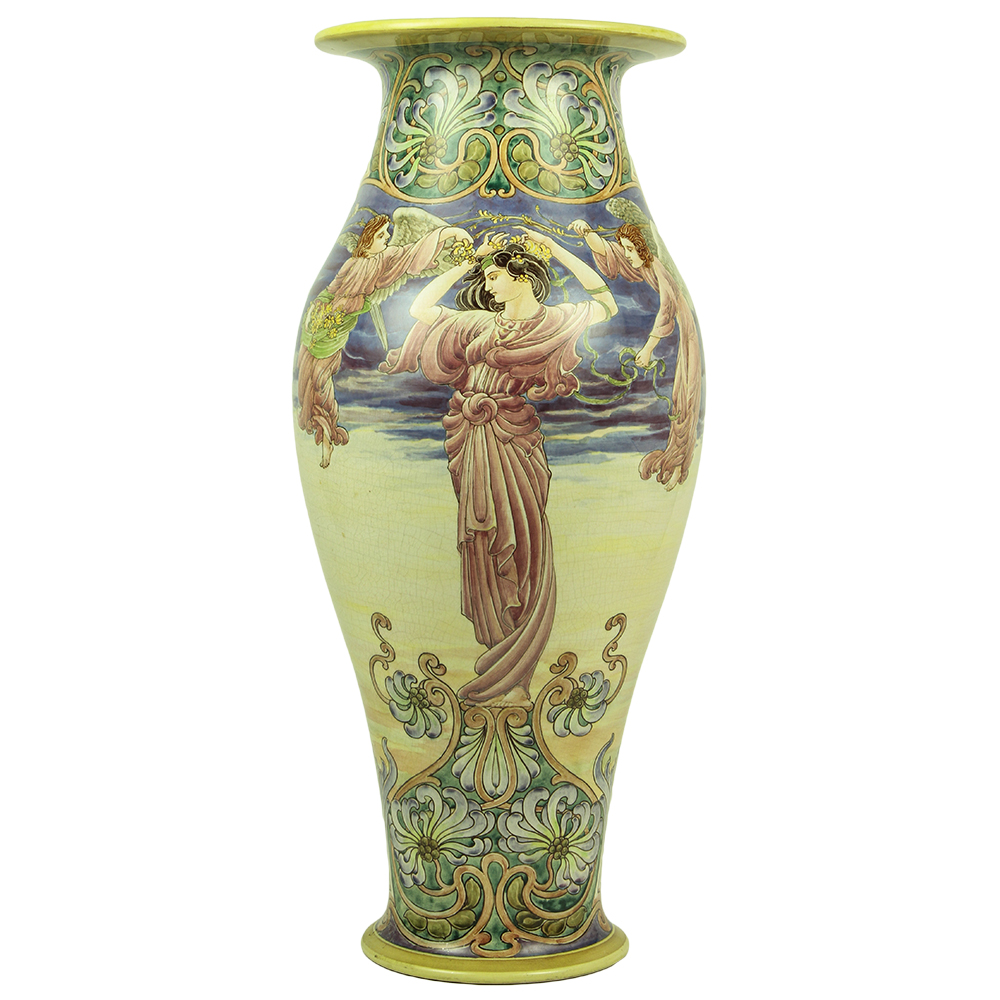
Doulton Faience Vase by J. McLennan
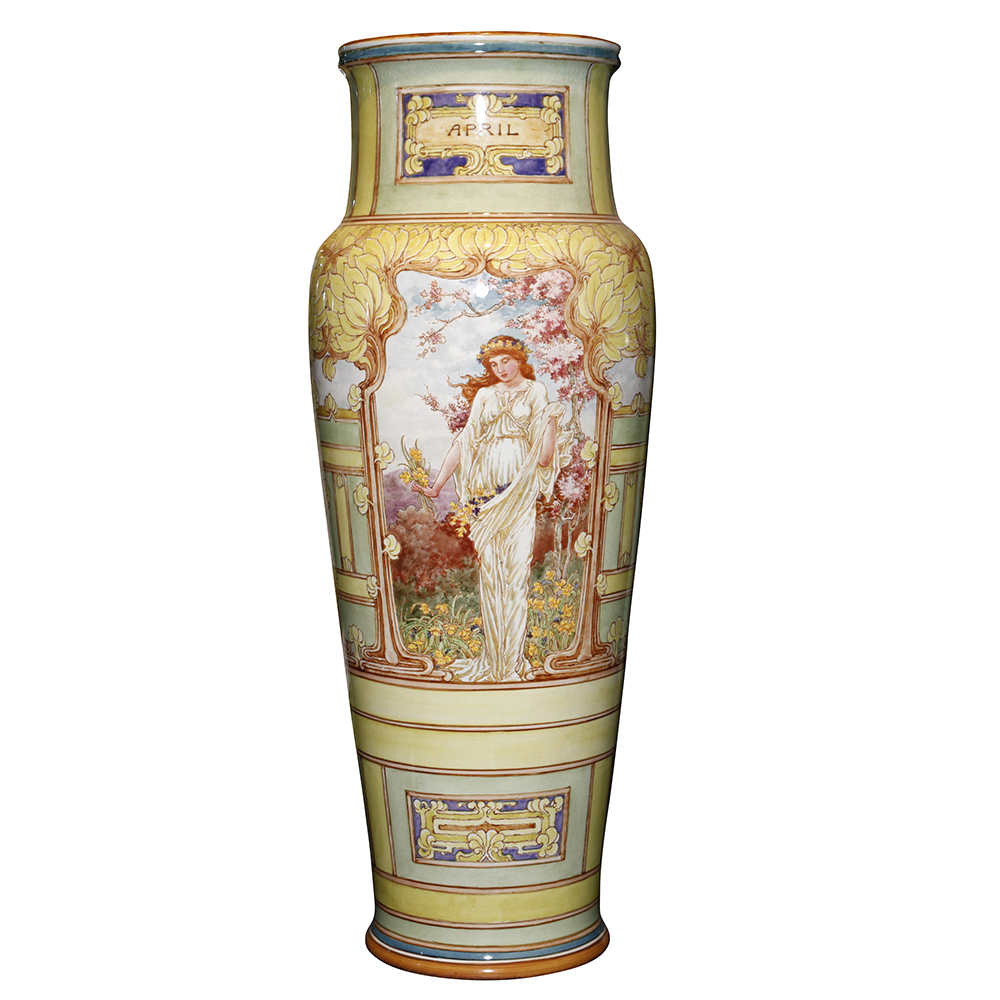
Doulton Faience Vase by J. McLennan
